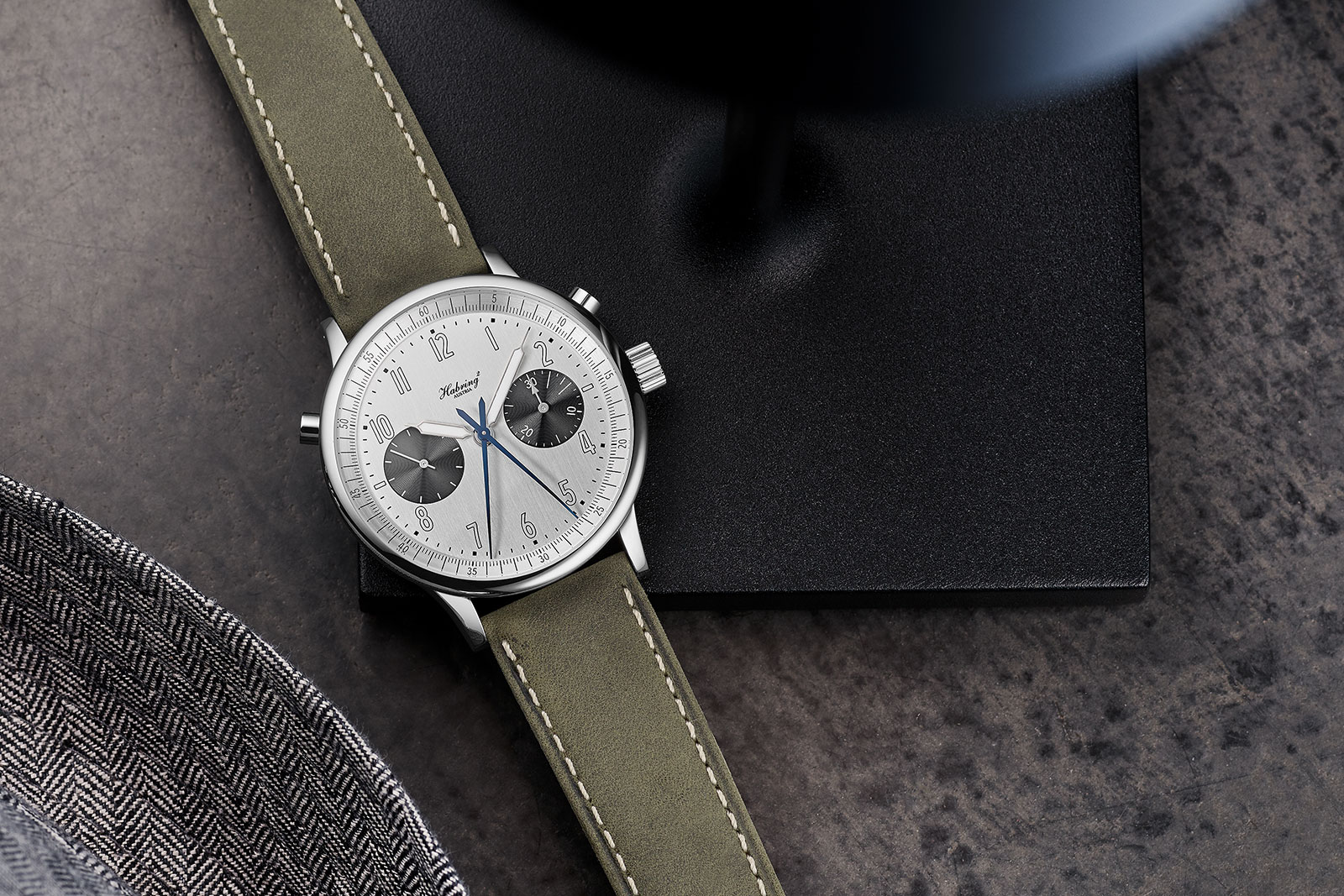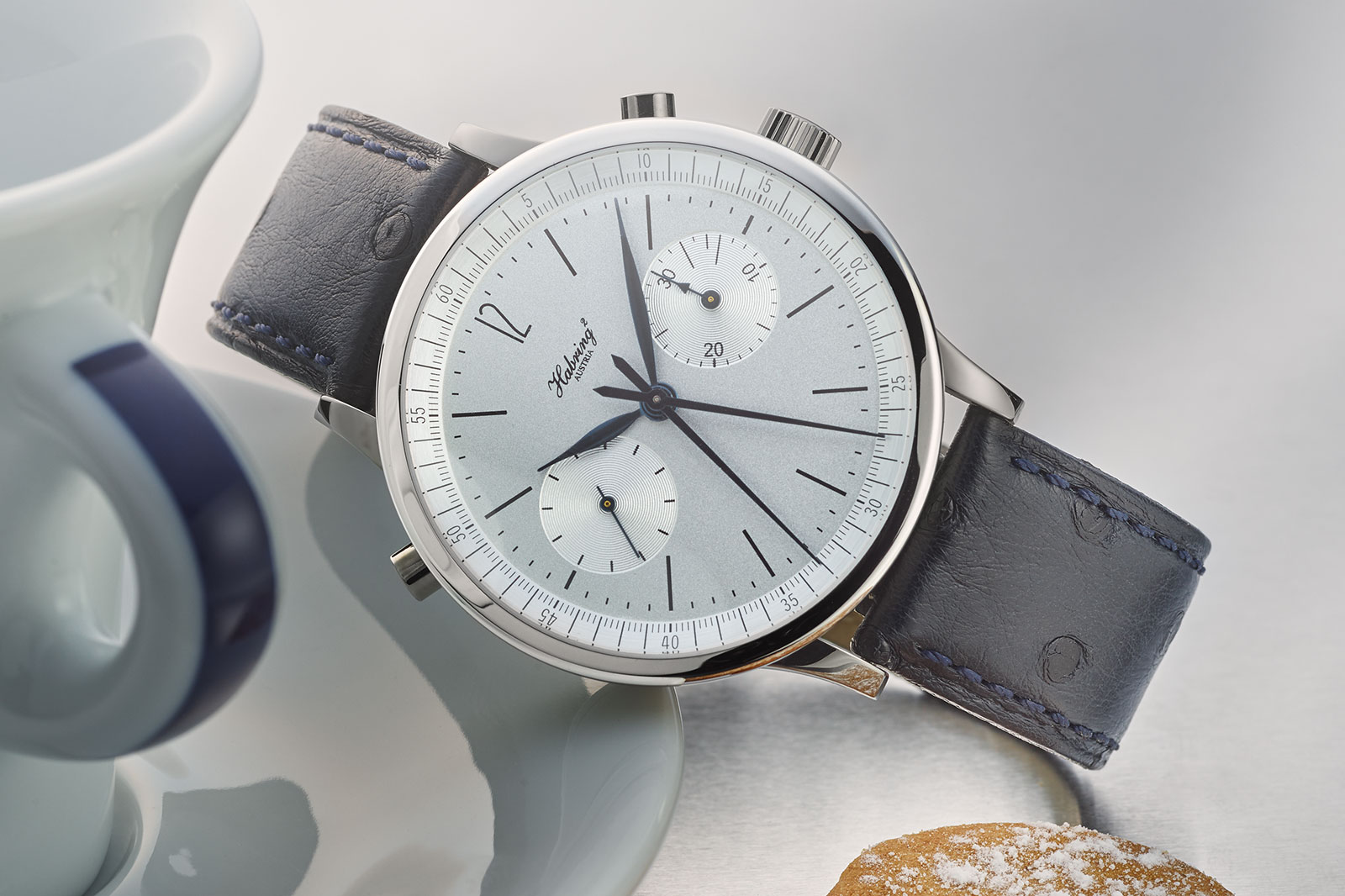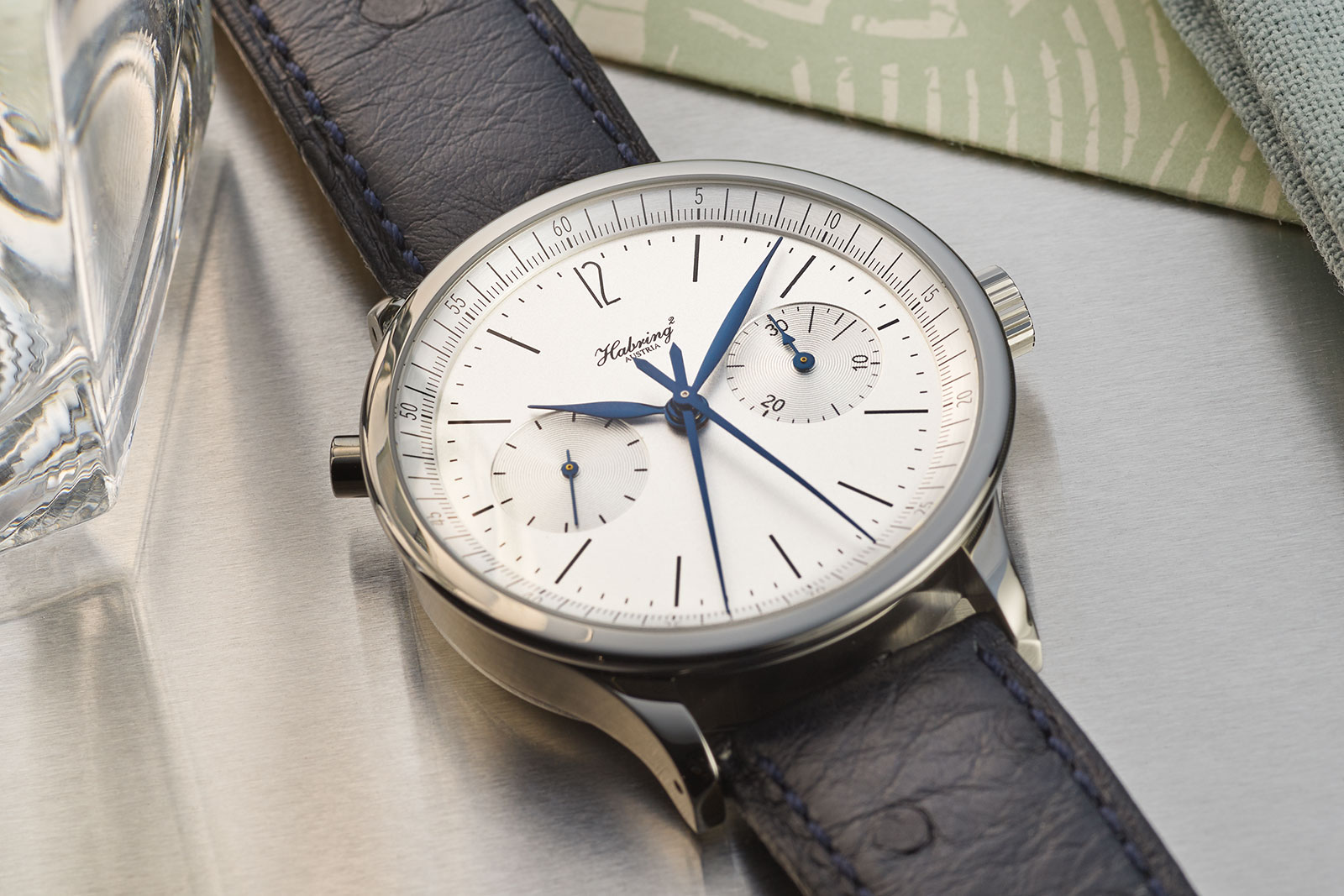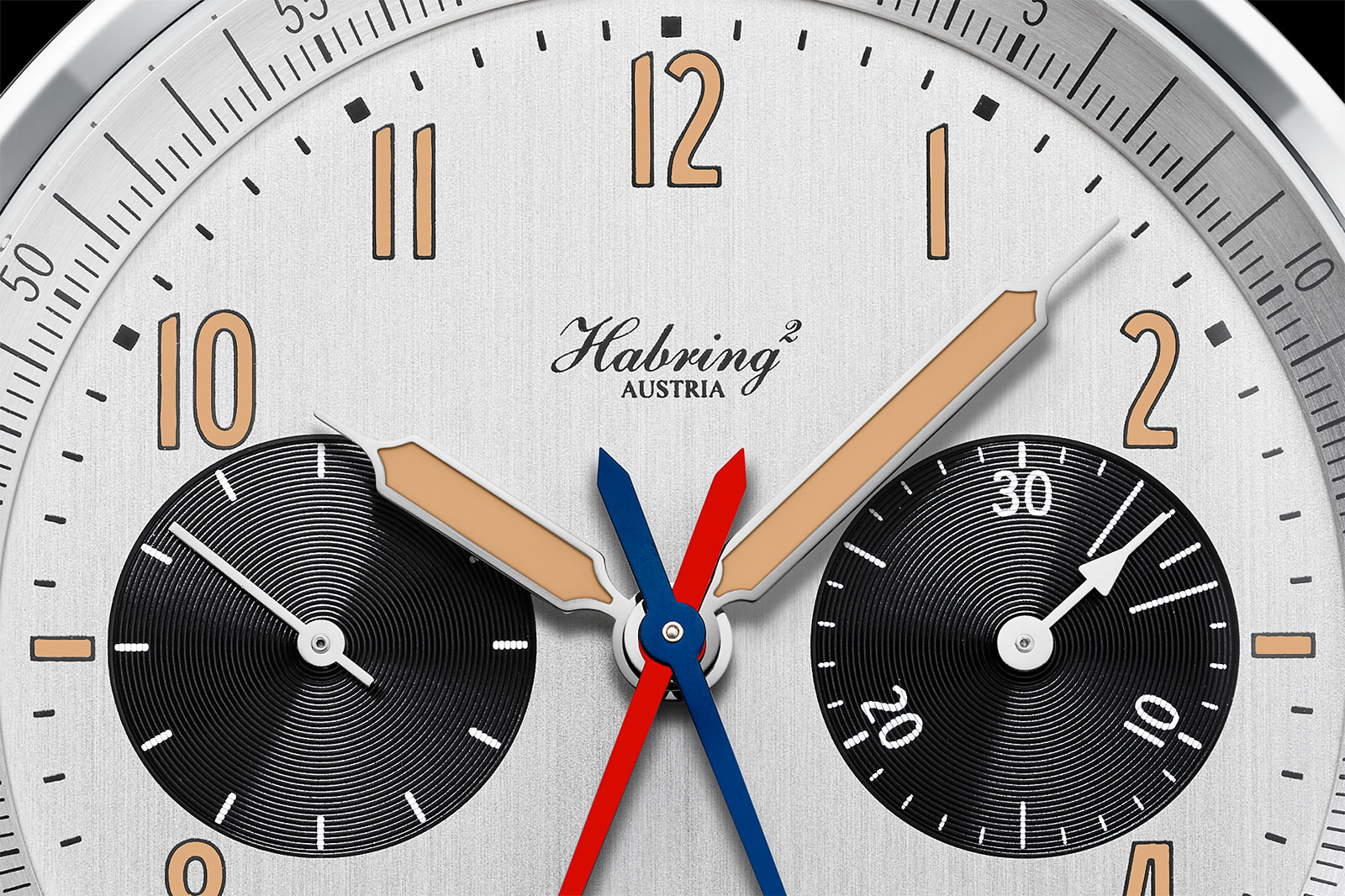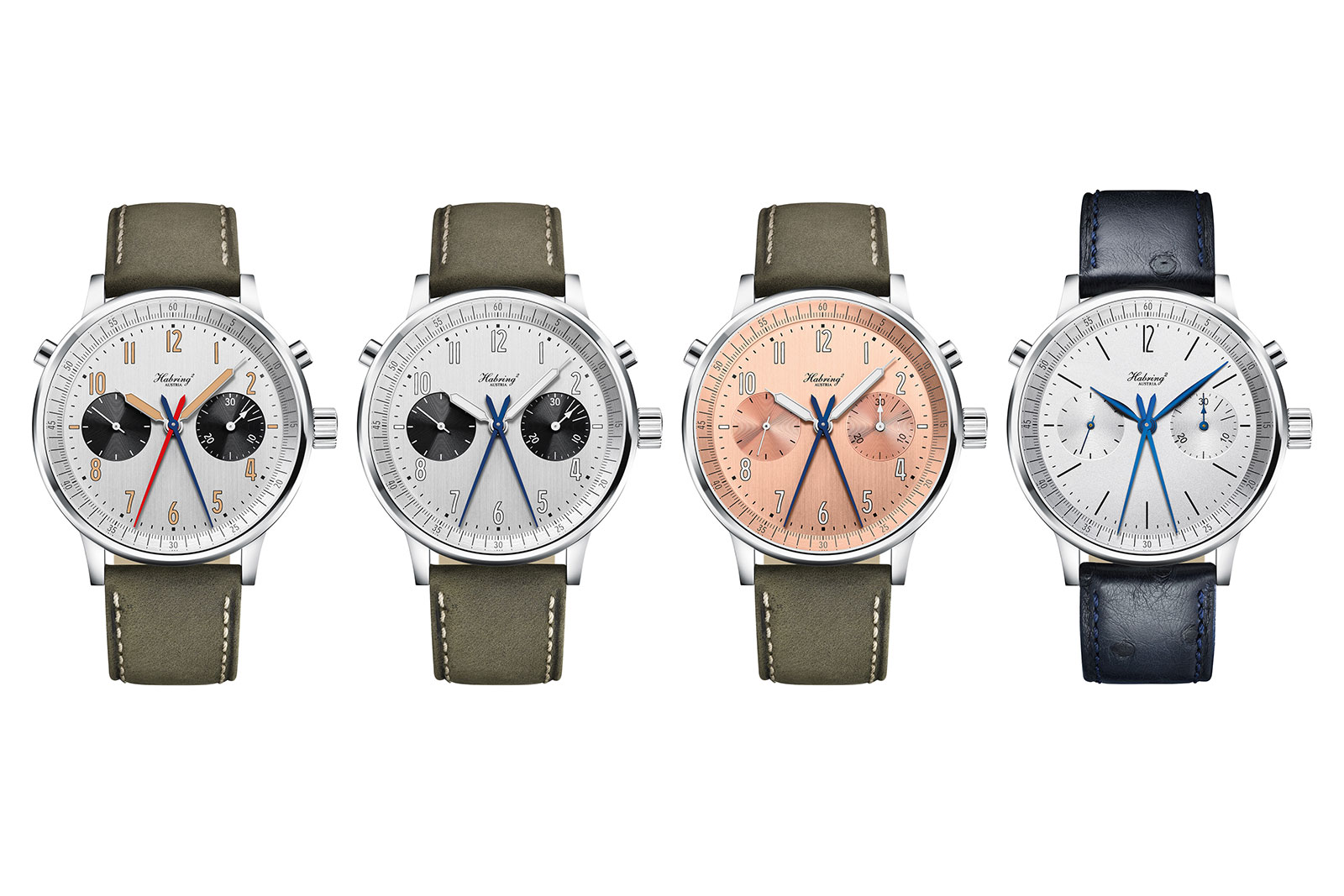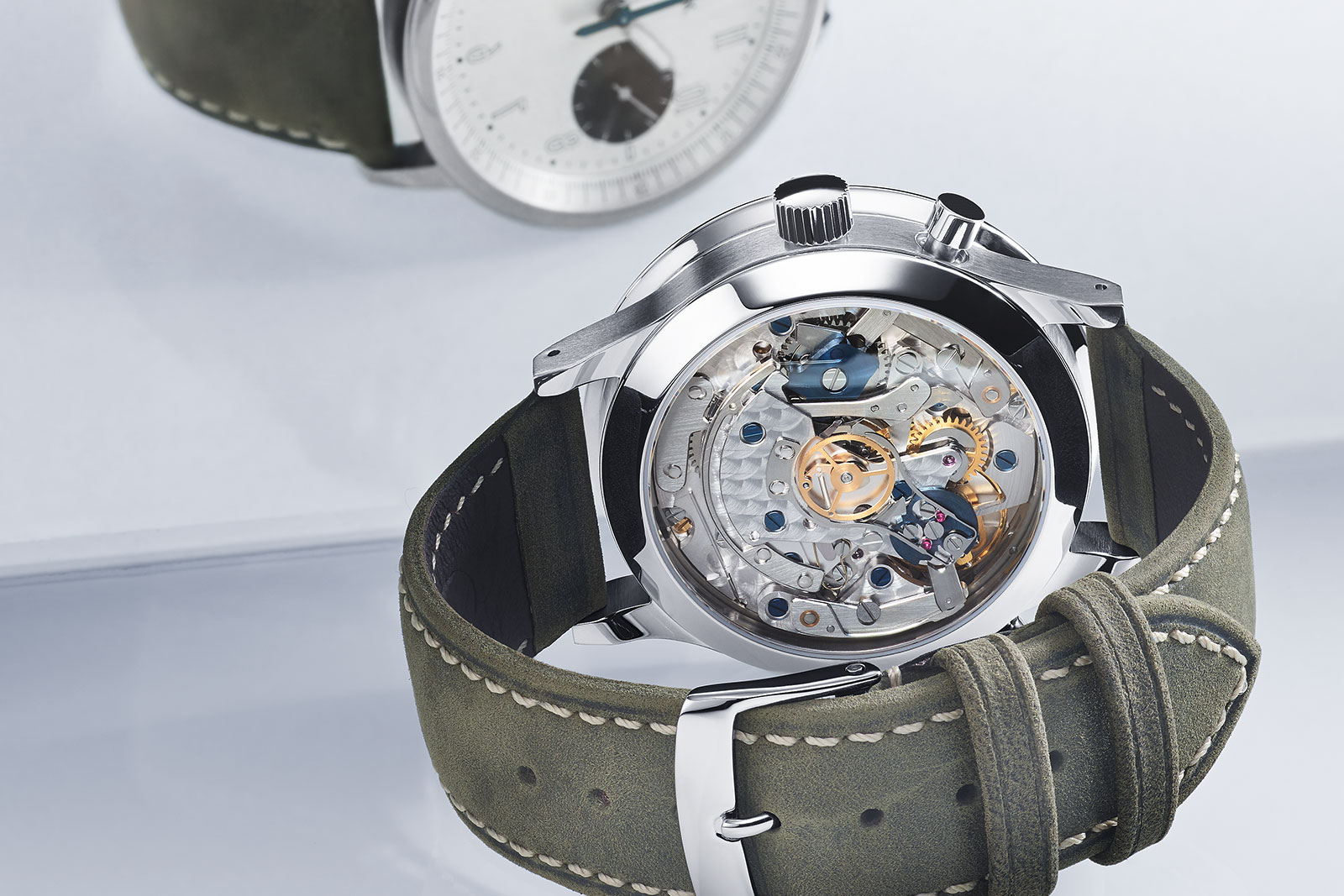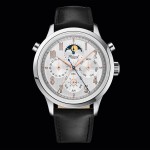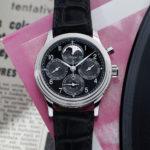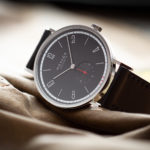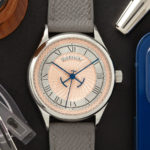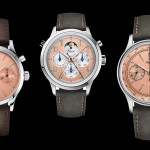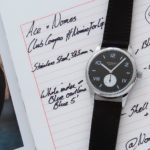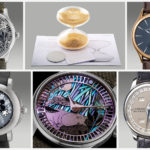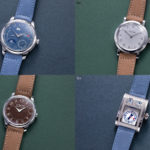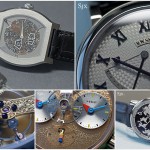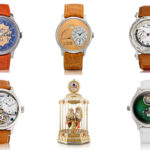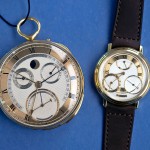With the curtain having just come down on the Geneva sale season, auction houses are migrating to Hong Kong for the second half of the autumn auctions. Going on the block at Phillips’ The Hong Kong Watch Auction: XV are 270 lots that encompass heavy-hitters and “hype” watches, but as usual we’ll take a look instead at a few interesting watches, starting with a selection of independent watchmaking.
We round up nine notable creations from the independents, mainly time-only watches with high-quality construction and unique design, such as a Voutilainen Vingt-8 with a skeletonised dial and the Ludovic Ballouard Upside Down.
The auction takes place on November 28 (lots 801-938) and November 29 (lots 939-1070). The full catalogue and sale registration can be accessed on Phillips.com.
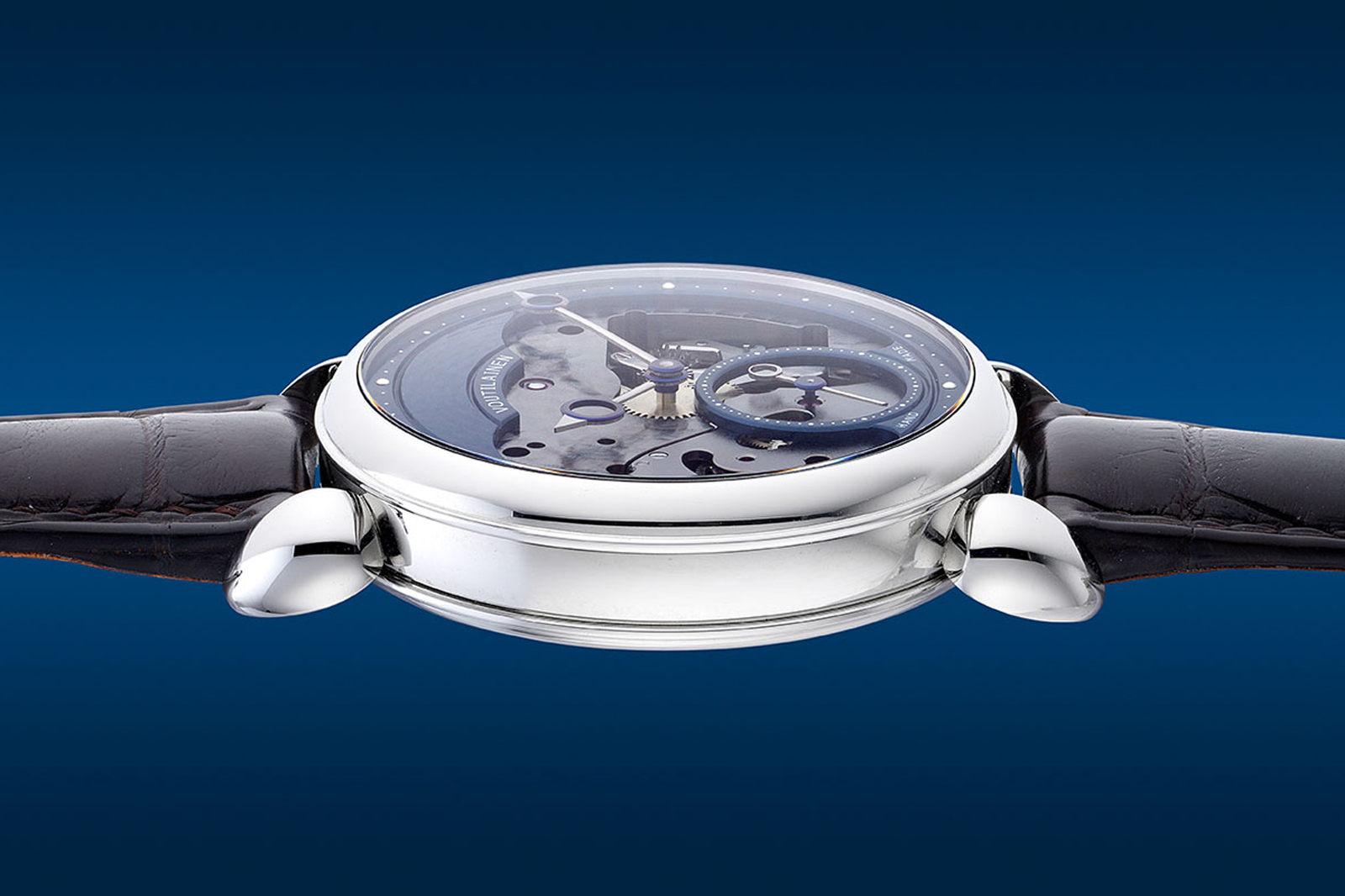
A modern-day chronometer heavily inspired by traditional watchmaker – the aesthetics are a practically a revival of styling from the good old days – the Hommage H37 is an easy watch to like. Living up to its name, the Hommage pays tribute to classical gentlemen’s watches. It’s a three-hander in a classically-sized 37 mm case that contains a Lemania-based self-winding movement certified as a chronometer by the Besançon Observatory.
The Hommage case was modelled on the Patek Philippe ref. 1463 “Tasti Tondi” chrongraph, though the resemblance is less obvious on the time-only model. But the simple lines are undeniably appealing despite their simplicity, as is typical with the best case designs.
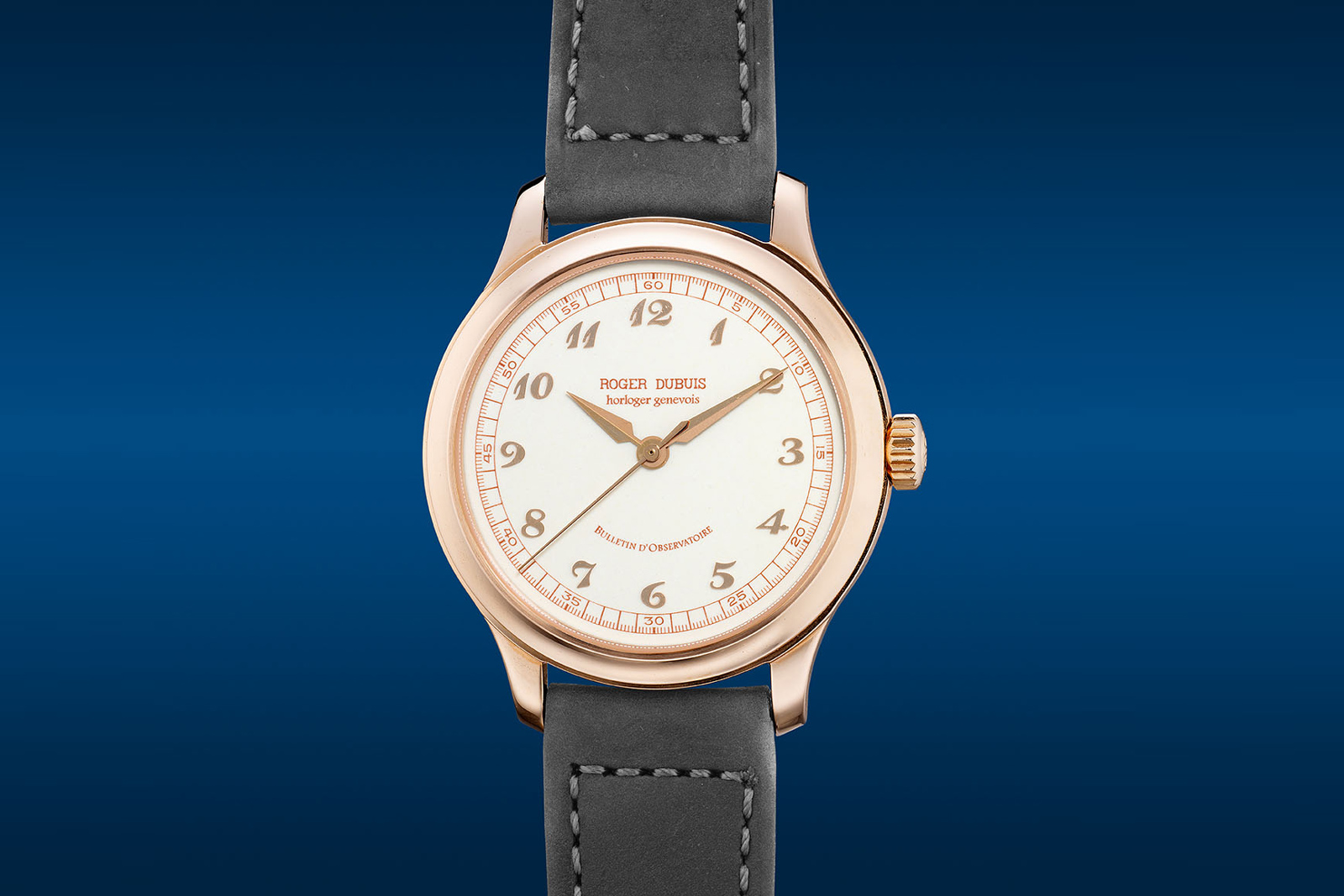
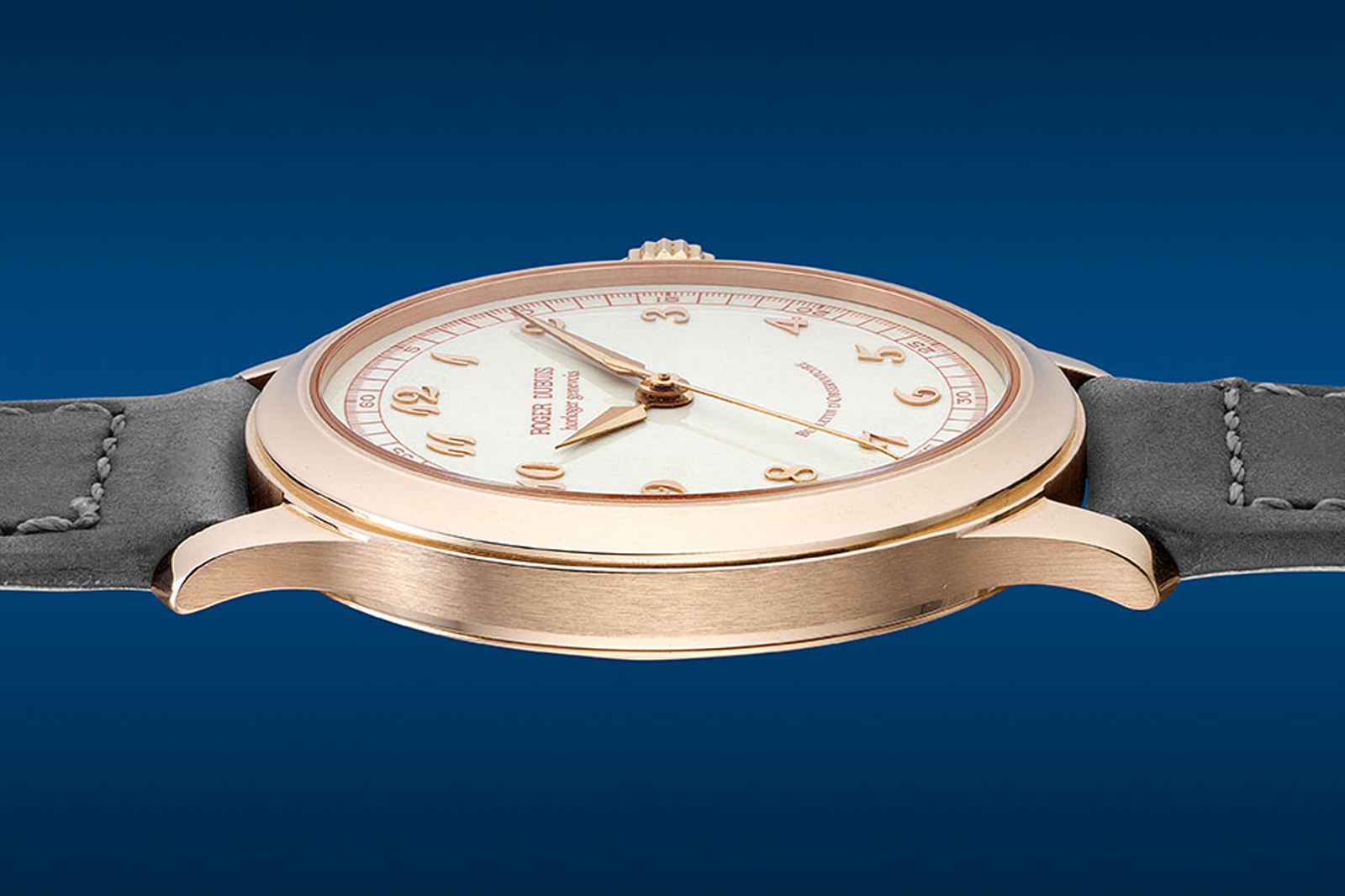
But the highlight of the present example is its enamel dial. Combining applied Breguet numerals with crisp printing in dark red that echoes the warmth of the case, the dial is amongst the less common for the Hommage series. The Hommage was offered with a variety of dials ranging from lacquer to guilloche, but the enamel dials are amongst the rarest and arguably the most beautiful.
And the enamel dial is itself a nod to traditional Geneva watchmaking – think of oversized chronometer pocket watches with enamel dials – which makes this a homage in more ways than one.
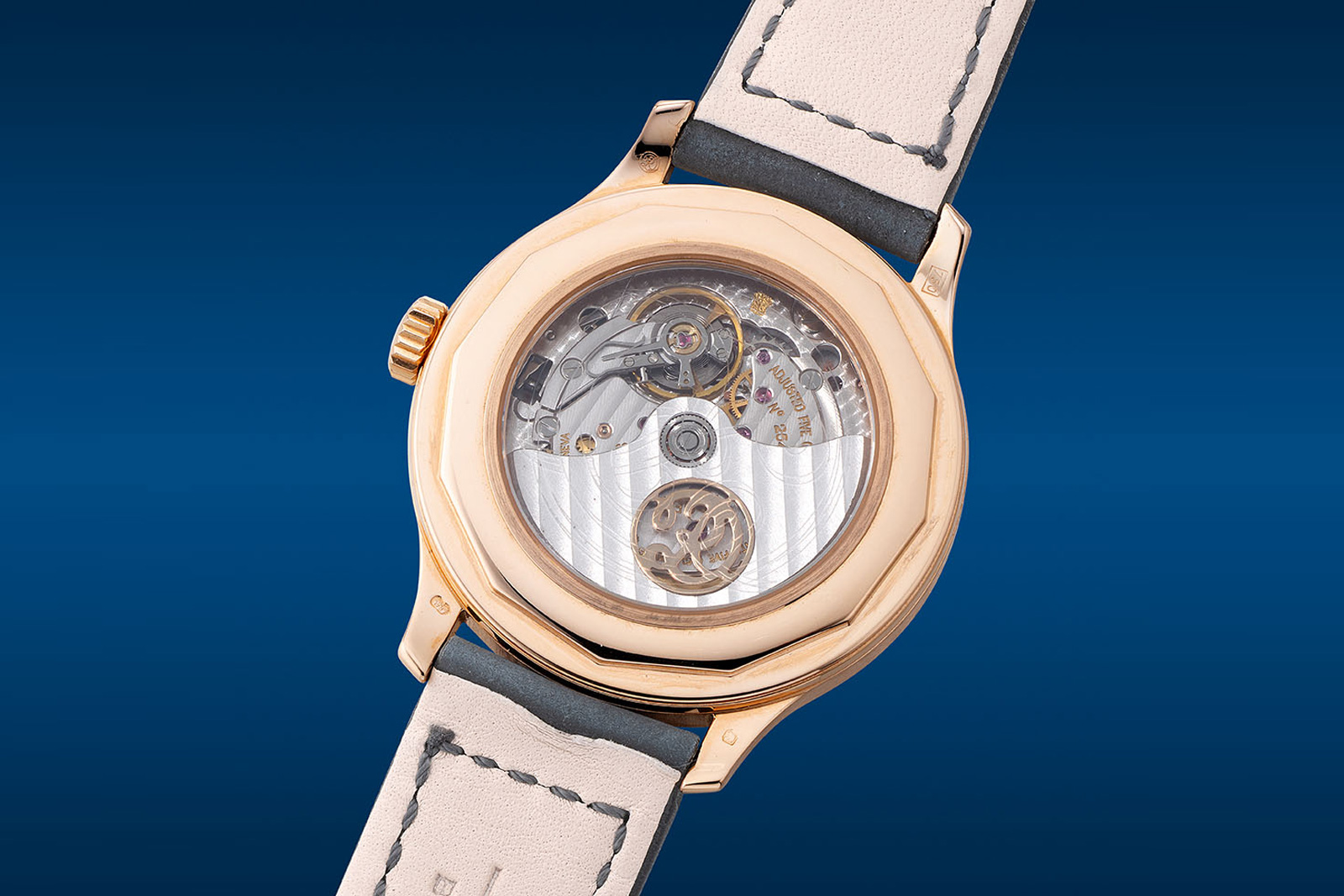
The Hommage H37 has an estimate of HK$80,000-140,000, or about US$10,300-17,900 – impressive value for a finely finished watch with an enamel dial.
Full lot details here.
A time-only watch with an unmistakable character depsite the many variations made, this particular example of the Vingt-8 is a twist on Voutilainen’s signature wristwatch. It does away with a conventional dial, resulting in something that’s possibly unique but certainly unusual.
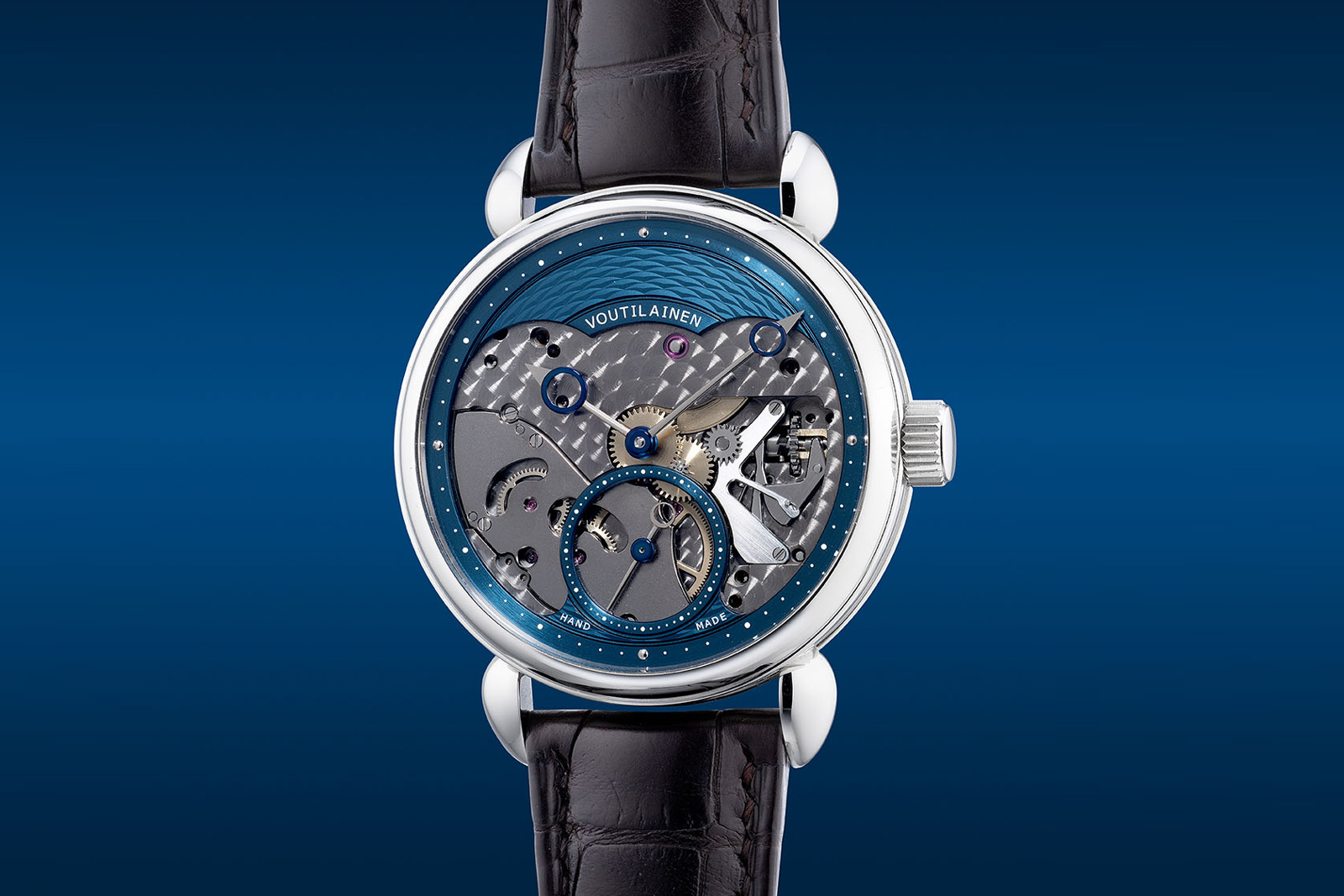
Being an independent watchmaker with a smallish team, Voutilainen often attends to collectors’ demands for custom watches, so one-off examples are not uncommon. Still, the open dial is unusual. Most Voutilainen watches sport ornate guilloche dials or exotic materials like mother of pearl and enamel, making the present example notably different.
Interestingly, the mostly open-worked dial gives the watch a more vintage aesthetic that brings to mind historical pocket watches with exposed mechanics. In fact, it is somewhat reminiscent English independent watchmaking as practiced by the late George Daniels.
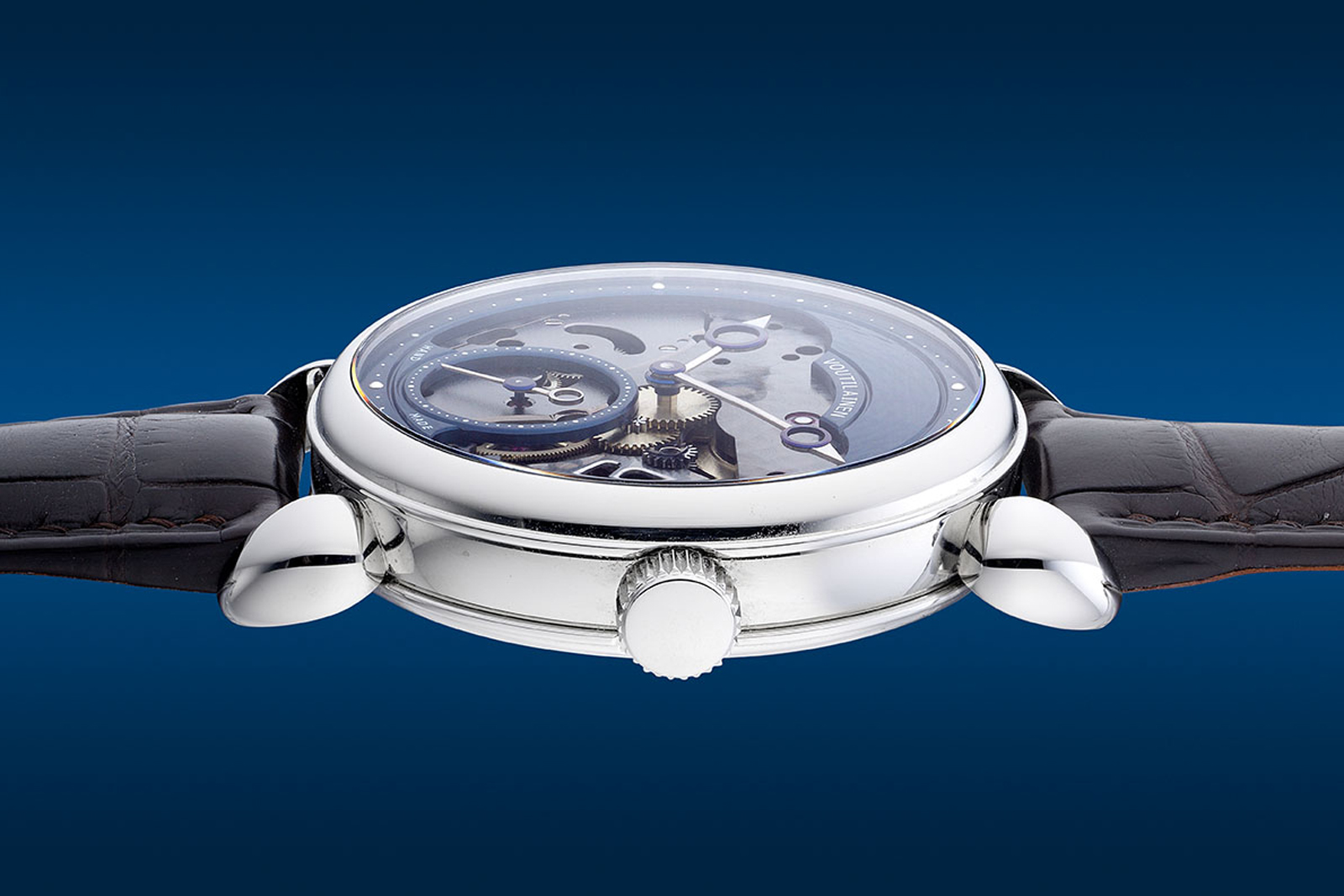
The remainder of the watch is typical Voutilainen. The case is stainless steel case and in the brand’s recognisable style with teardrop lugs, while the movement finishing is top-grade.
The cal. 28 frosted bridges that have been coated grey for a monochromatic appearance. It also sports the trademark extra-large balance secured by an equally large steel bridge that’s entirely black polished. And like all Voutilainen movement, it includes subtle details such as rounded, polished bevels on the bridges and polished teeth on the winding wheels.
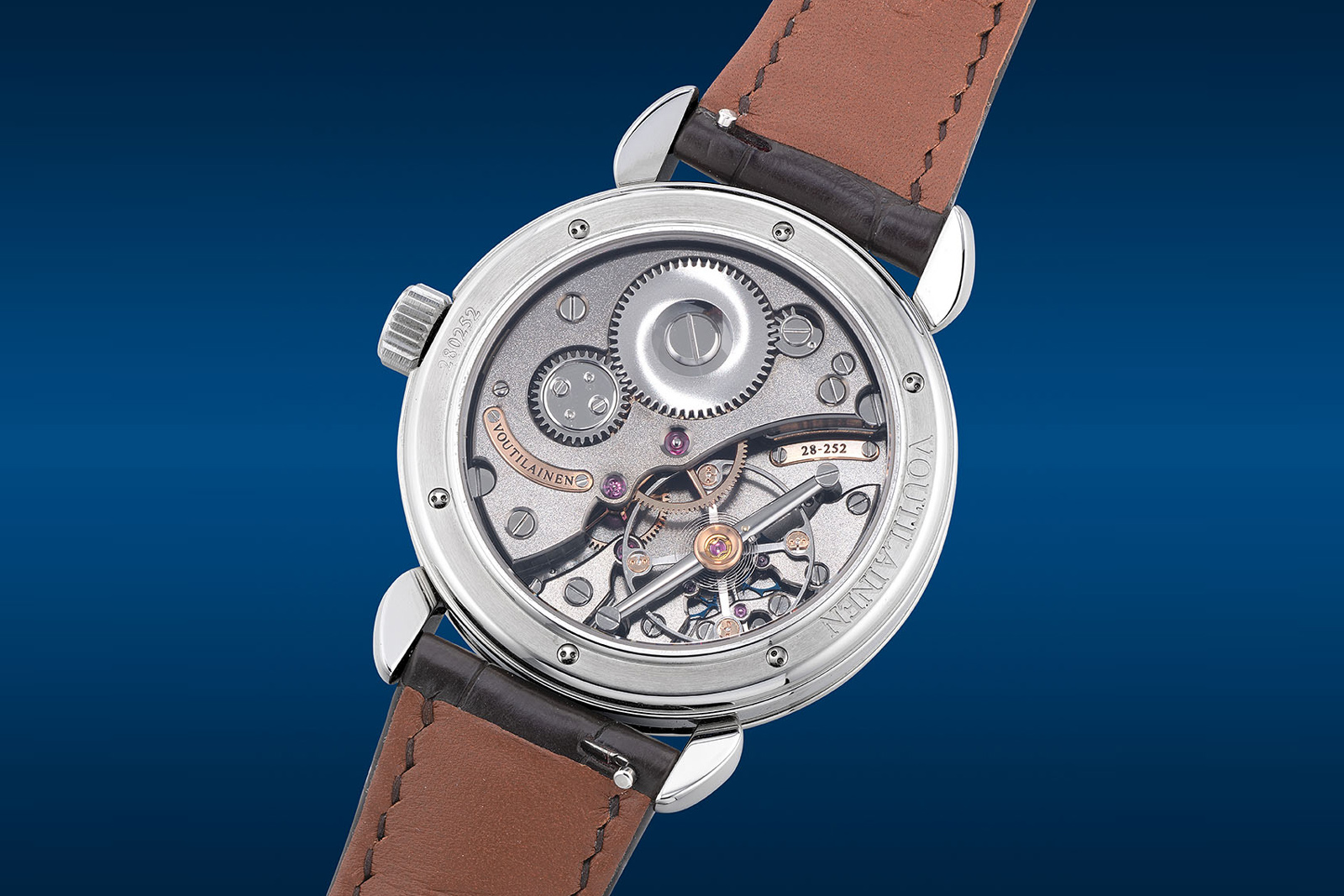
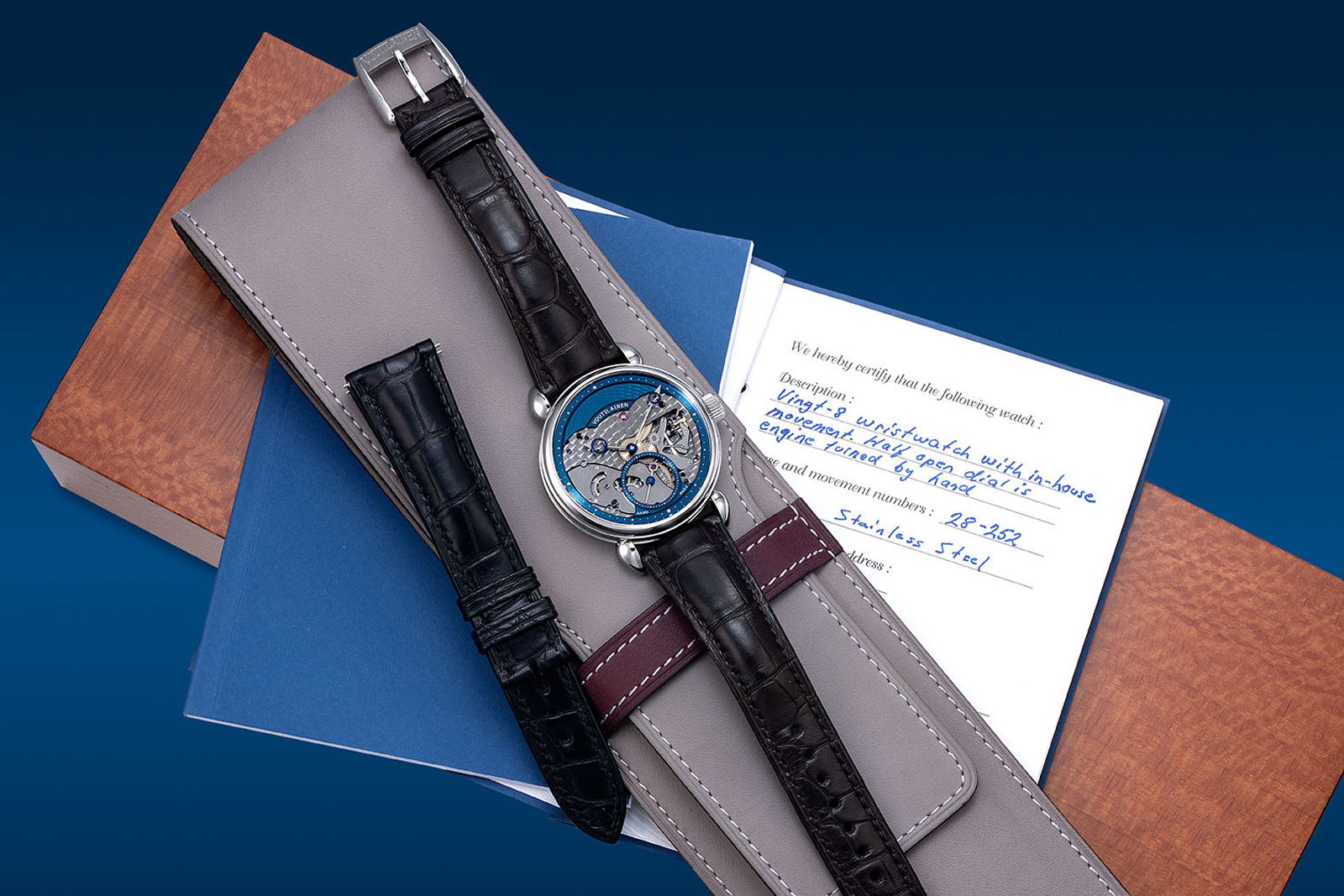
The Vingt-8 with an open dial has an estimate of HK$470,000-940,000, or about US$60,300-121,000.
Full lot details here.
Continuing the theme of fine time-only watches, the Chronomètre Souverain is a simple watch that’s emblematic of its creator. The model has been offered in myriad variations but all are instantly recognisable thanks to the strength of its design.
The Chronomètre Souverain was introduced in 2005 and won the Men’s Watch Prize at Grand Prix d’Horlogerie de Geneve the same year. And in 2010, Francois-Paul Journe gifted a specially-engraved example of the Chronomètre Souverain to George Daniels as a thank-you the late English watchmaker’s mentorship.
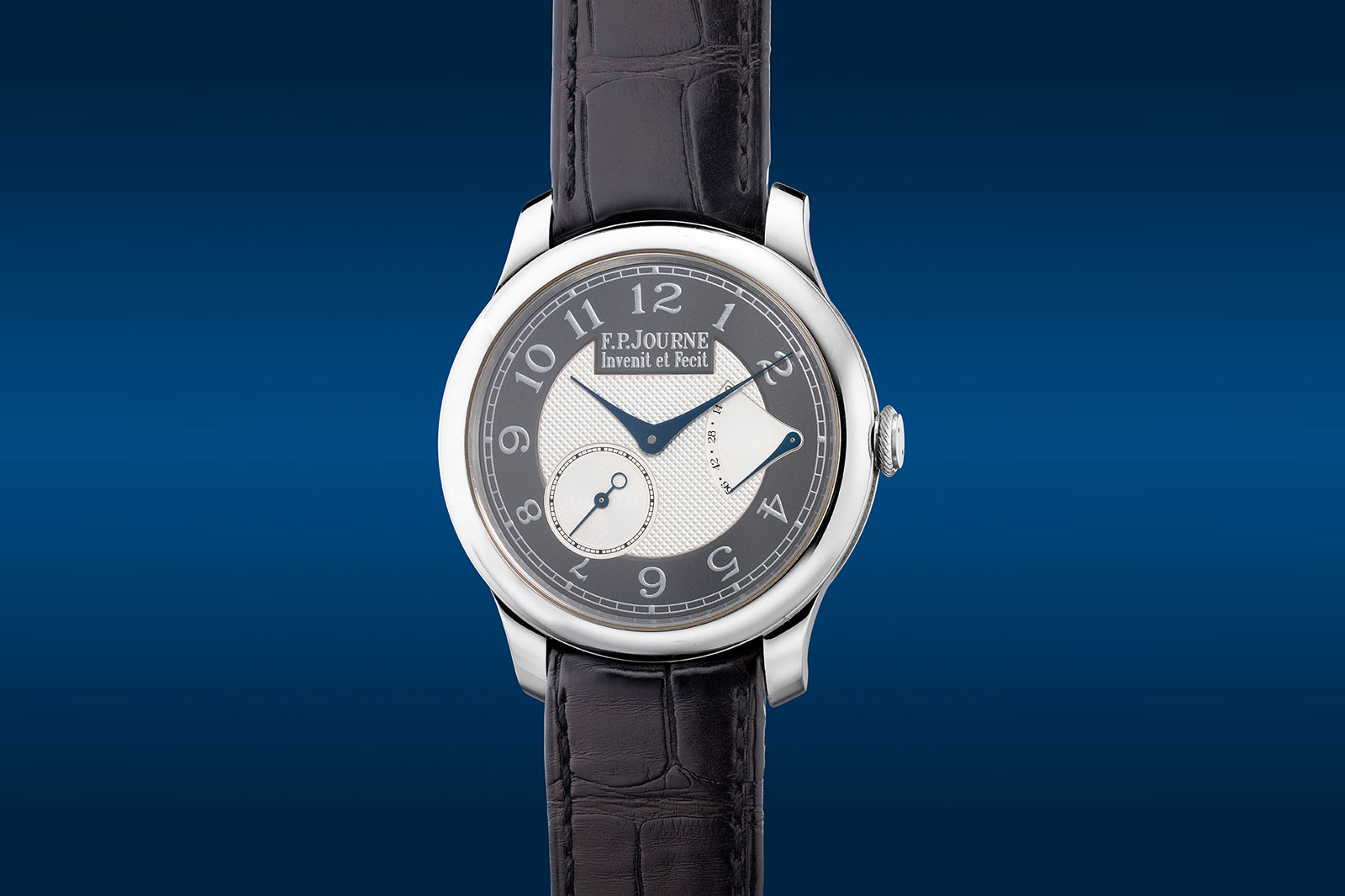
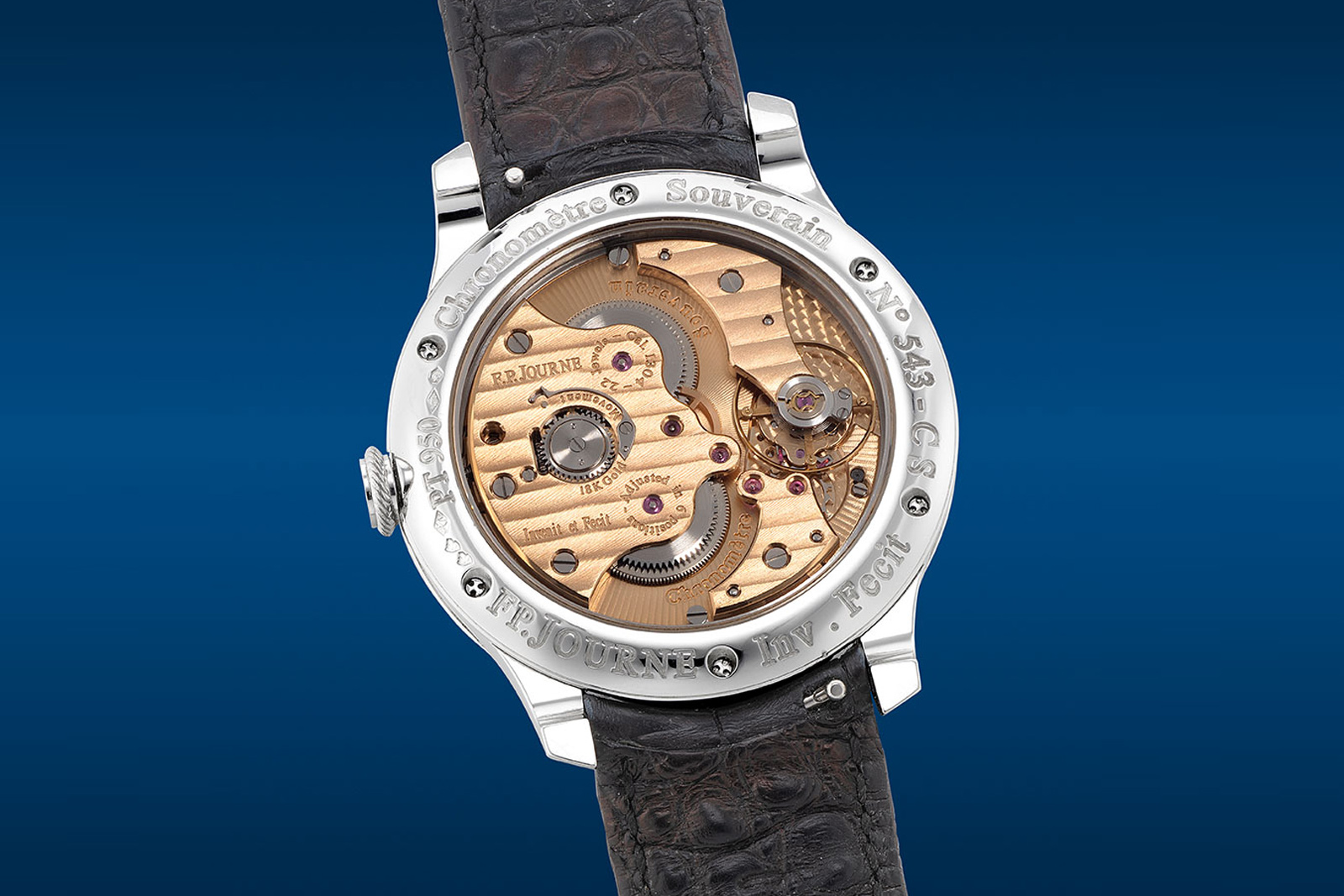
The distinctive design and history adds to the appeal of the Chronomètre Souverain, but the present example is more than that. Launched in 2007, this watch is one of eight made for Texas retailer deBoulle (which is incidentally no longer selling F.P. Journe).
It is distinguished by a dial that’s unusual F.P. Journe: the dial is in silver and ruthenium, giving it two-tone, “tuxedo” finish that sets it apart from most variants of the Chronomètre Souverain. The distinct appearance, along with the small run of just eight pieces, makes it one of the most unusual limited-edition F.P. Journe watches.
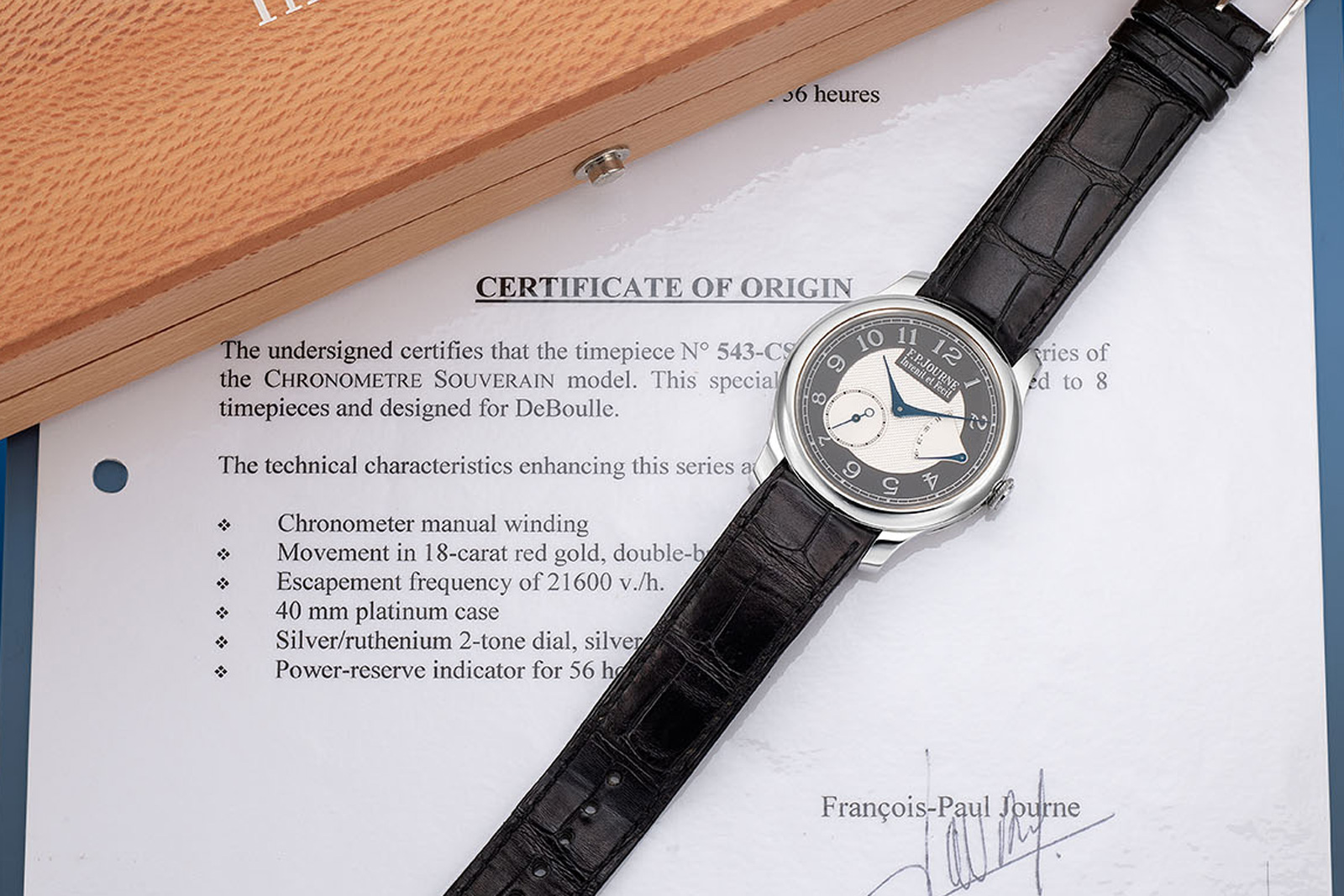
Accompanied by the box and certificate of authenticity, the Chronomètre Souverain “DeBoulle” in platinum has an estimate of HK$300,000-600,000, or about $38,500-76,900.
Full lot details here.
Anything limited edition from F.P. Journe is desirable – despite a great variety of them – but even with the limited editions there’s a distinction. The more common are iterations of a standard model, like the Chronomètre Souverain “DeBoulle” above.
The next category, however, is made up of unique models, the watches originally conceived for the hardcore fan before the brand became fashionable. Amongst them is the Tourbillon Anniversaire Historique T30.
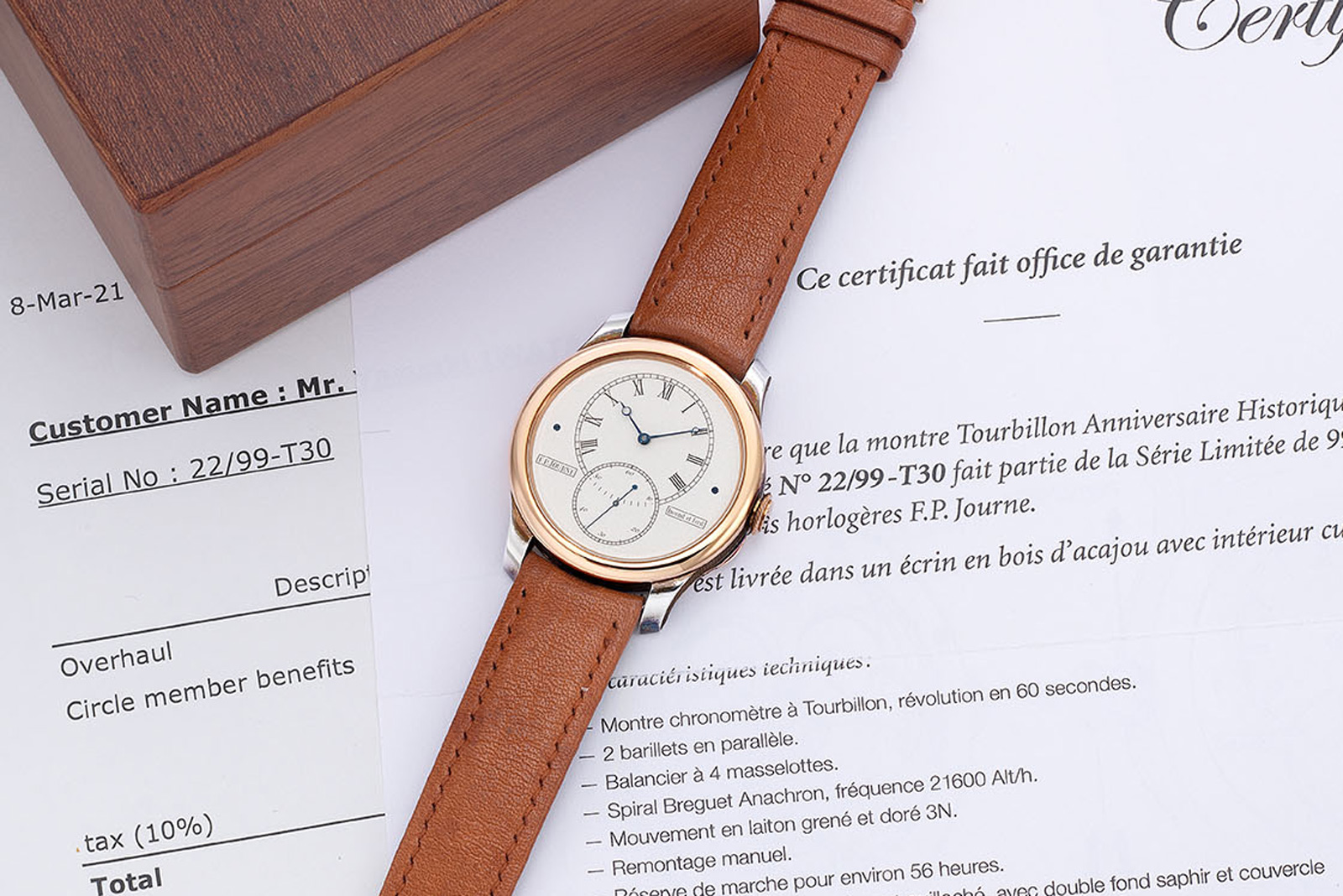
Debuted in 2013 for the 30th anniversary of Mr Journe’s first watch, the T30 is a homage to the very pocket watch. It essentially reproduces the pocket watch, right down to the sterling silver case, but as a wristwatch. In both materials, construction, and design, the T30 is easily one of the most unusual F.P. Journe wristwatches ever made.
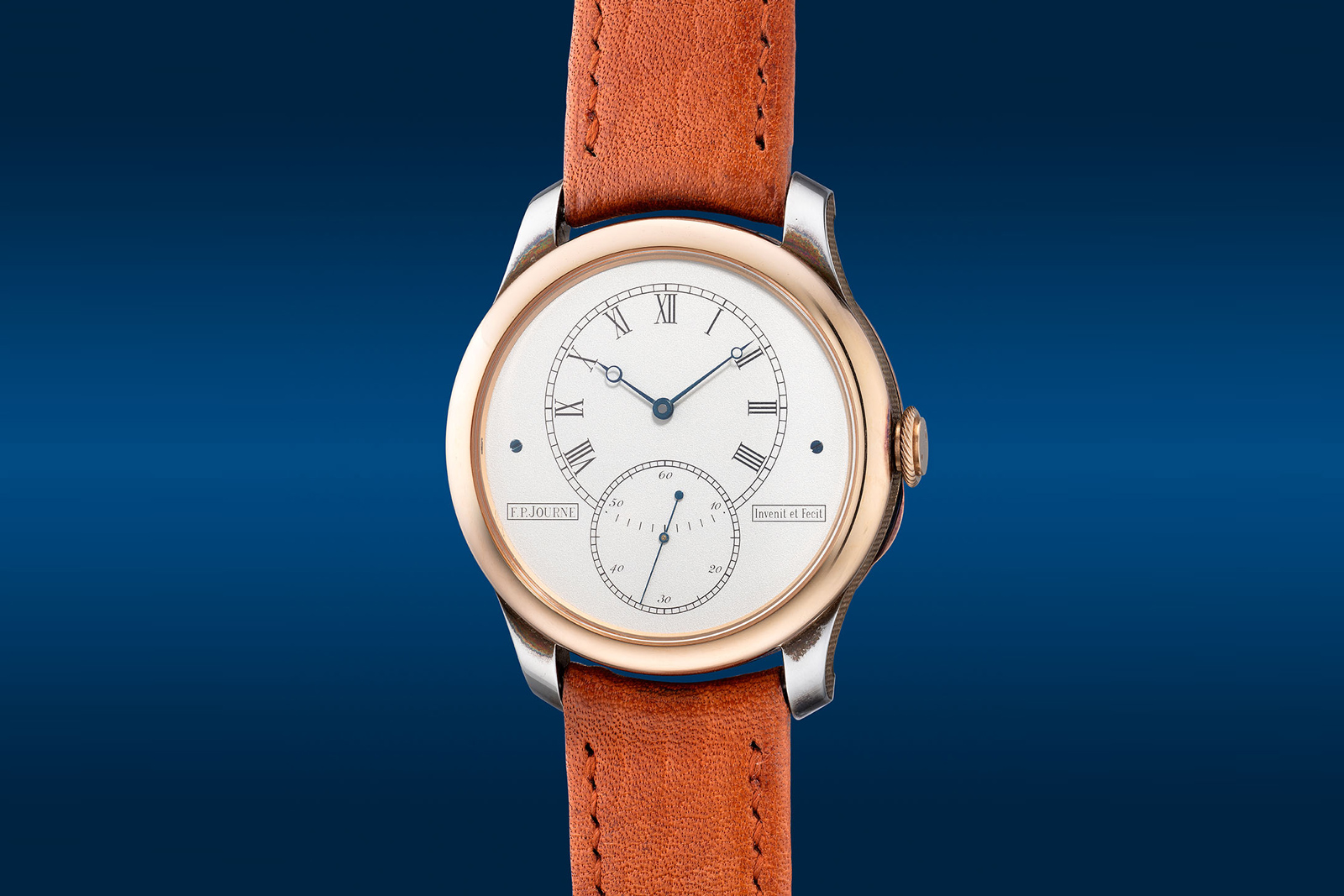
Inspired by Breguet and Daniels, the 1983 pocket watch had a symmetrically-arranged movement with twin barrels and a large tourbillon, all discretely hidden away on the back. The T30 recreates both the aesthetic and construction of the pocket watch movement, but leaves out the detent escapement found in the original that lacked shock protection (a no-no in wristwatches).
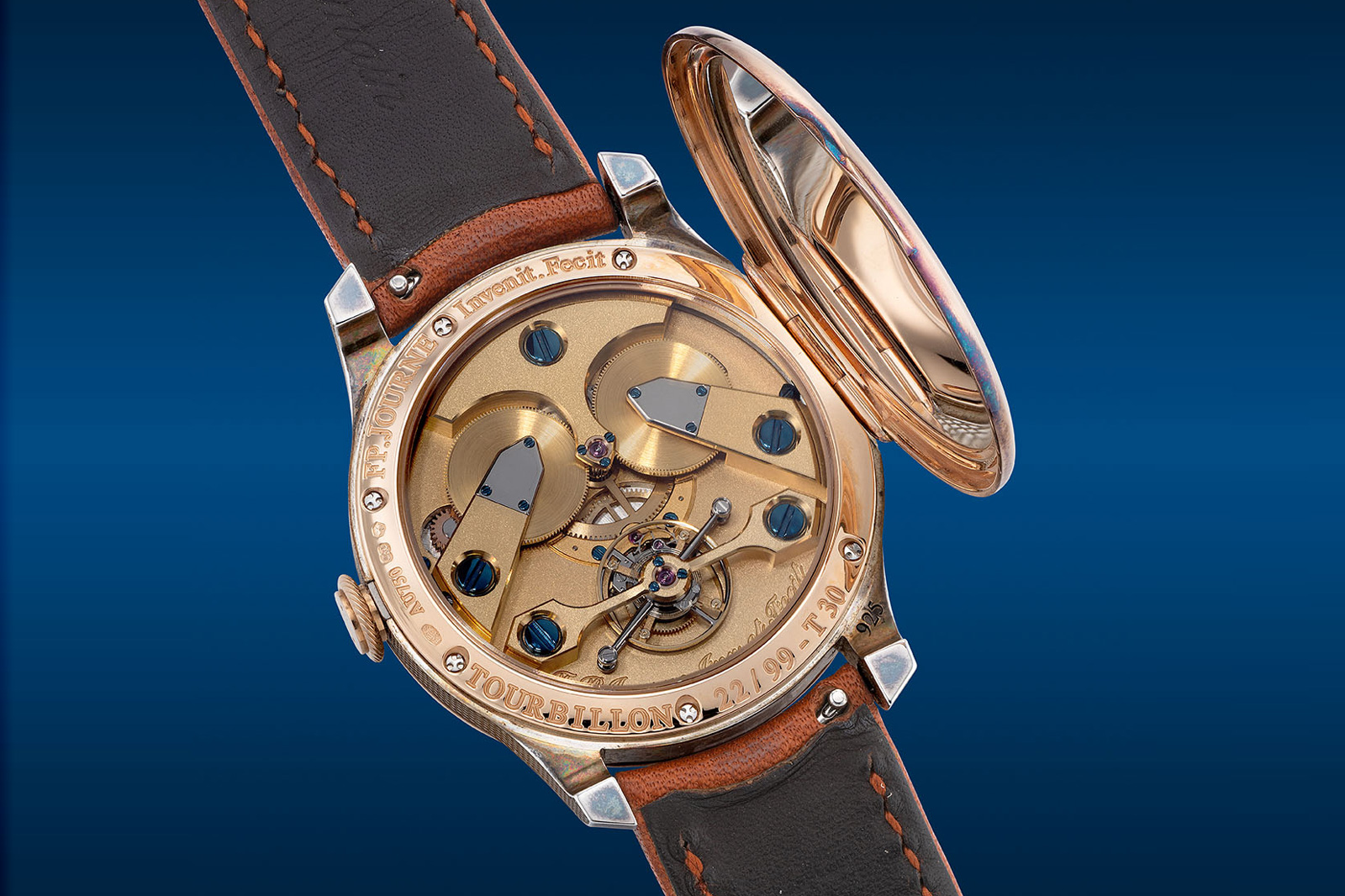
The dial and case are equally different from a typical F.P. Journe, yet remain coherent with the brand’s design language, reflecting its roots in 19th century Breguet. With a clarity and symmetry typical of vintage Breguet, the dial nonetheless has several elements that are now signatures of the F.P. Journe brand, such the exposed screws and “Invenit et Fecit”.
But perhaps the most unusual aspect of the watch is the case. A hunter case with a hinged back just like the pocket watch, it is in sterling silver and pink gold, with engine turned decoration on the back and sides.
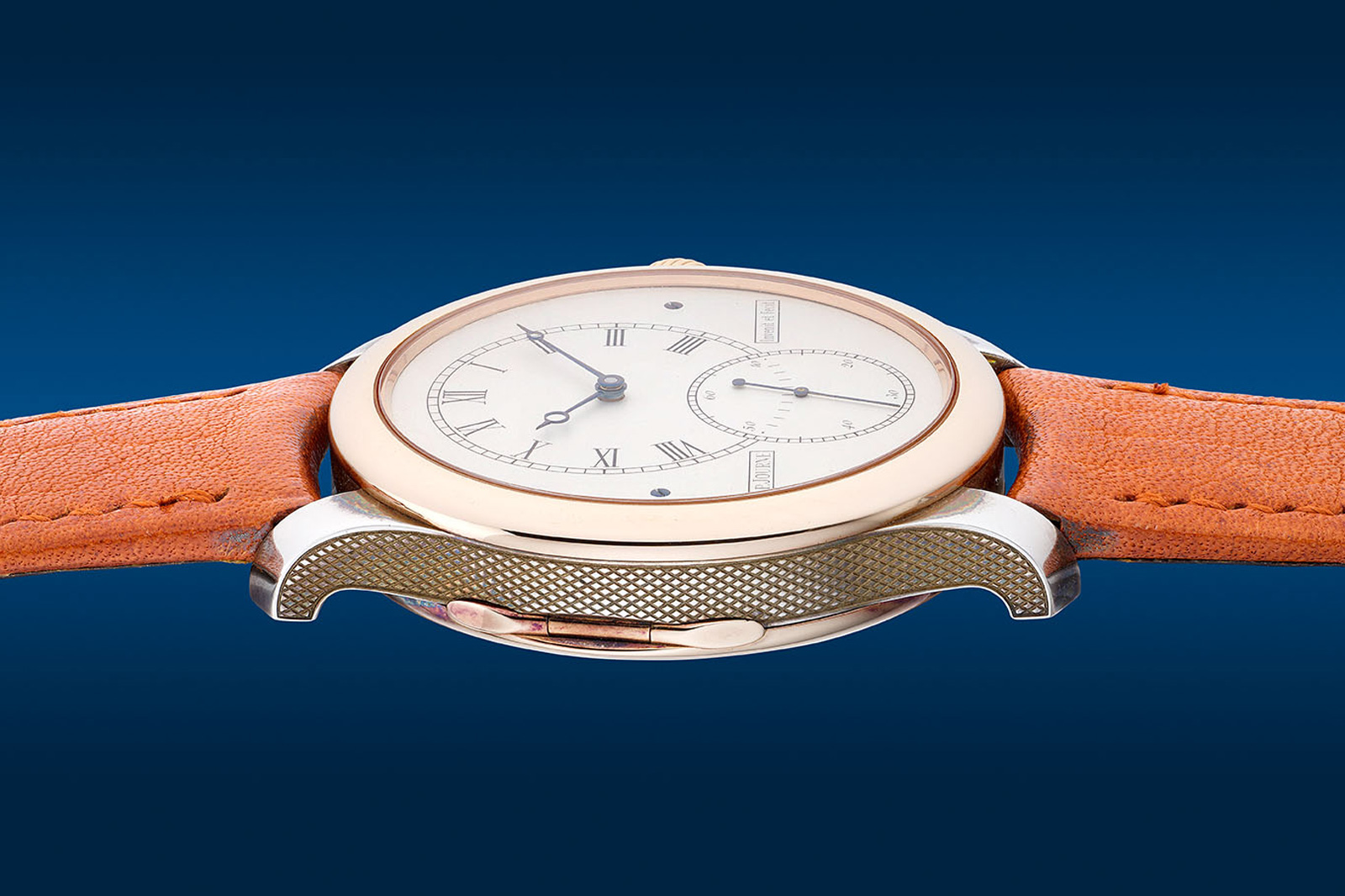
Guilloche case middle in silver
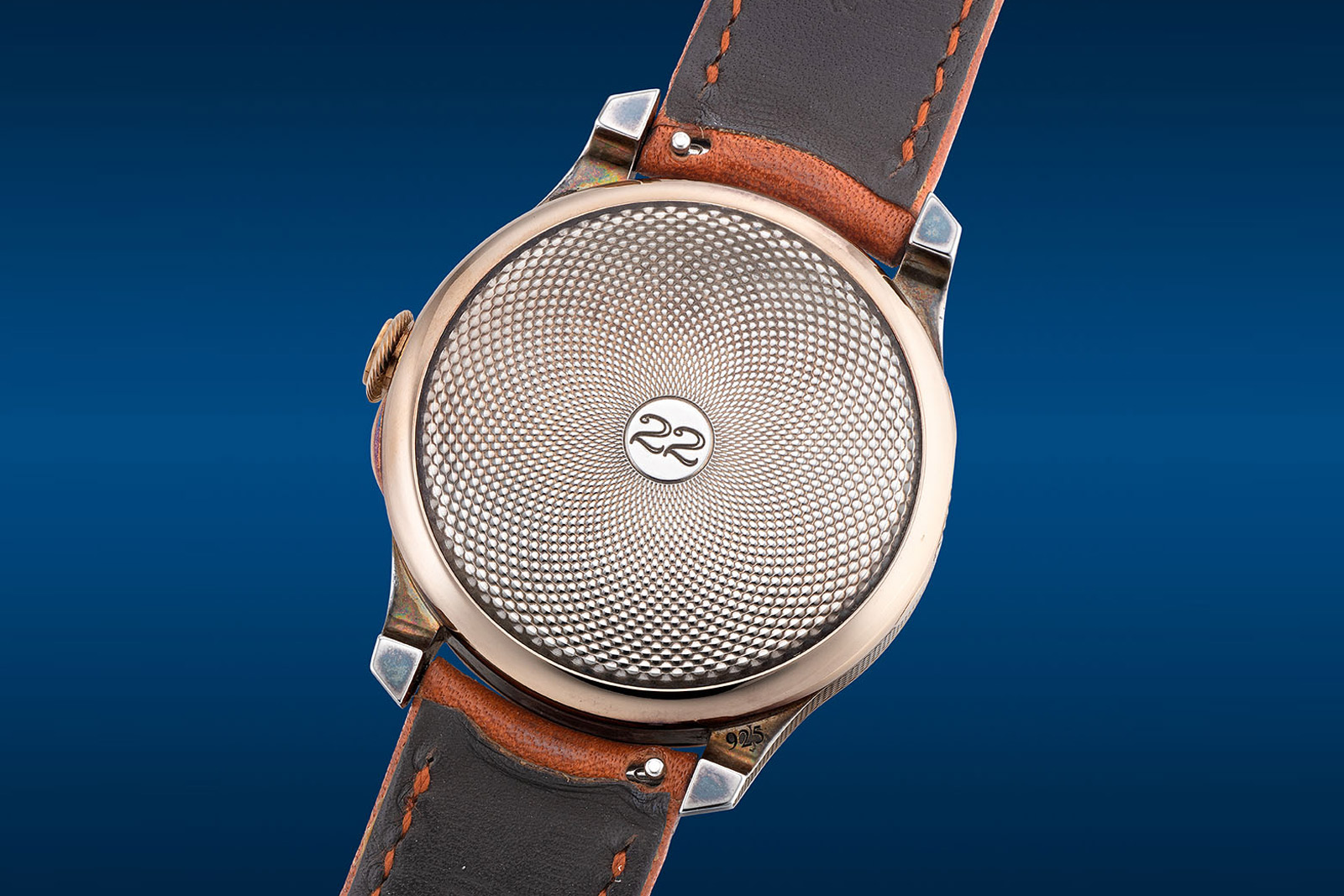
And a guilloche hunter back
Numbered “22/99”, the T30 has all of the original goodies and has an estimate of HK$1.18-2.4 million, or about US$151,000-308,000.
Full lot details here.
Roger W. Smith learned the trade at a watchmaking school in the 1980s followed by a spell at major brand, but it was his apprenticeship with George Daniels that set him on the path that he continues today. The only of Daniels’ apprentices to have lasted long enough to become a permanent collaborator, Mr Smith set up his own workshop in 2001.
That year, he launched his first wristwatch, the Series 1, that had a rectangular case. But it wasn’t until 2006 that Mr Smith unveiled a round wristwatch with the Series 2, which importantly incorporated the Co-Axial escapement invented by his mentor.
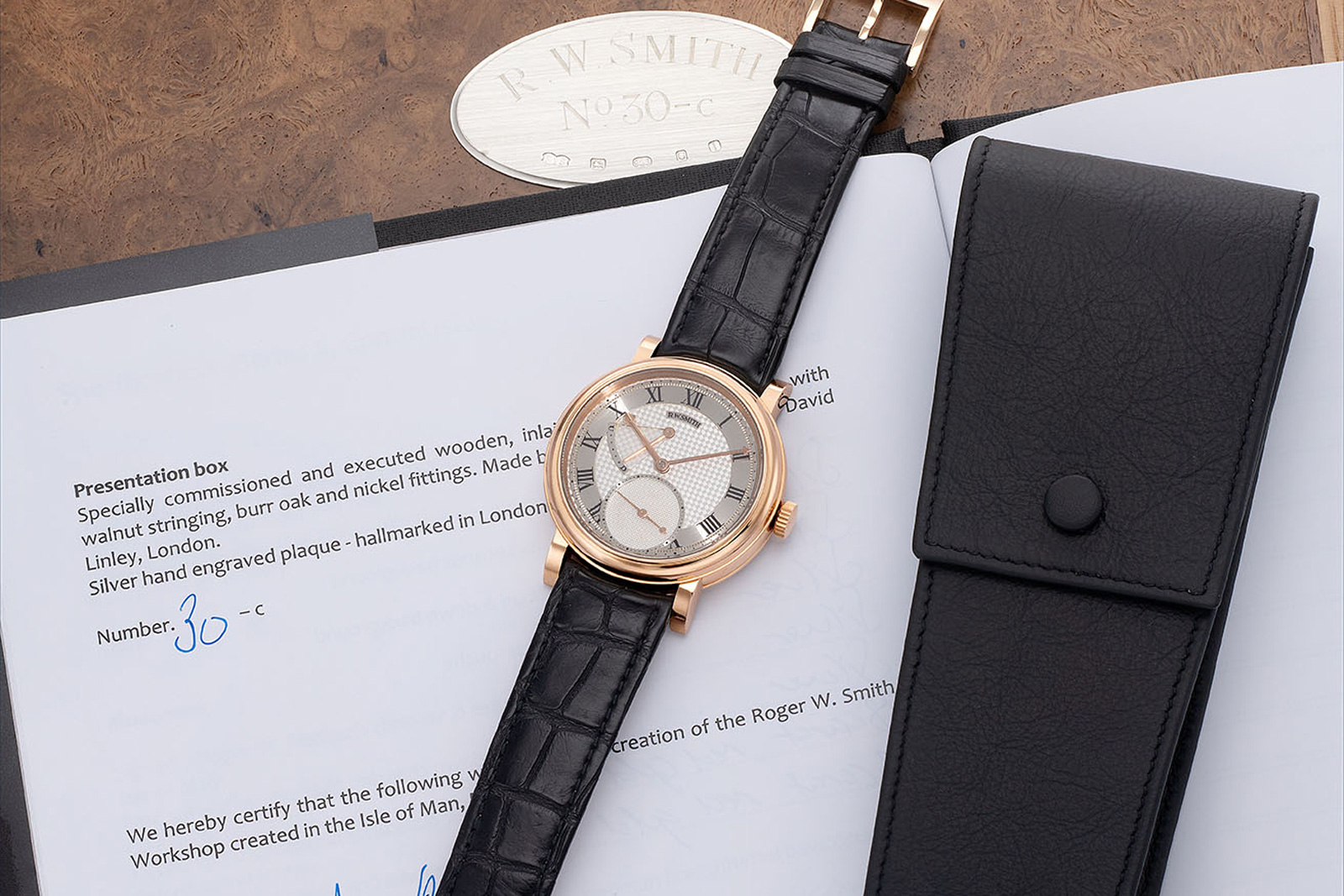
Originally intended as a limited edition with few variants, the Series 2 instead evolved into a base model ripe for customisation, as the present example has been. Though conventional on the front, the giveaway that this watch has been customised is on the back, where the barrel cover as well as the balance cock have been hand-engraved with intricate floral pattern. In a standard Series 2 (of which there are few), the movement parts are simply frosted.
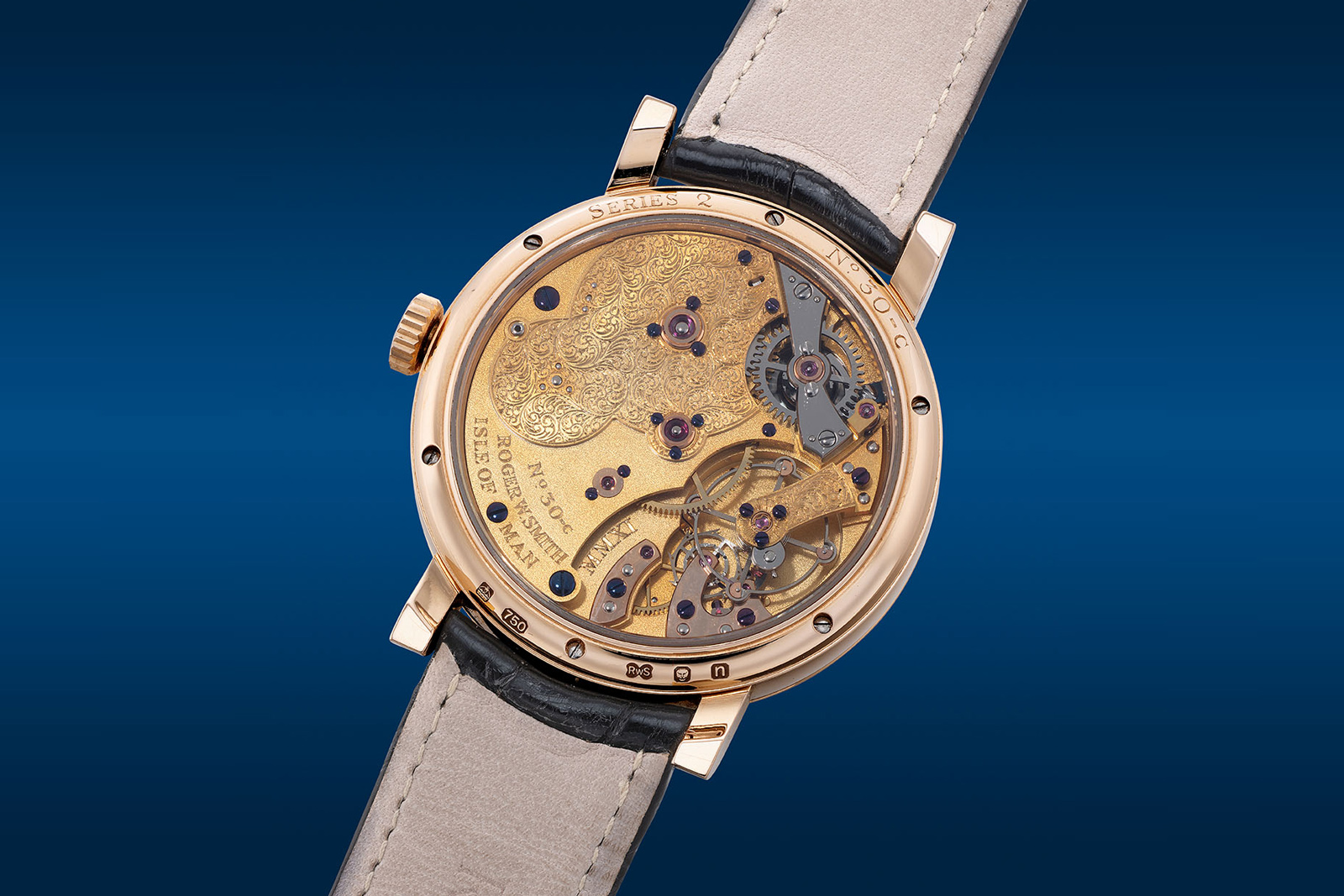
Notably, as a 2012 example, the movement feature a newer version of the Co-Axial escapement that was an improvement over the original. Instead of a two-part escape wheel, it relies on a one-piece escape wheel that still has the short teeth of the original, which were later replaced with long teeth in 2015. The transitional escape wheel captures the thought process of Mr Smith in refining the Co-Axial over two decades.
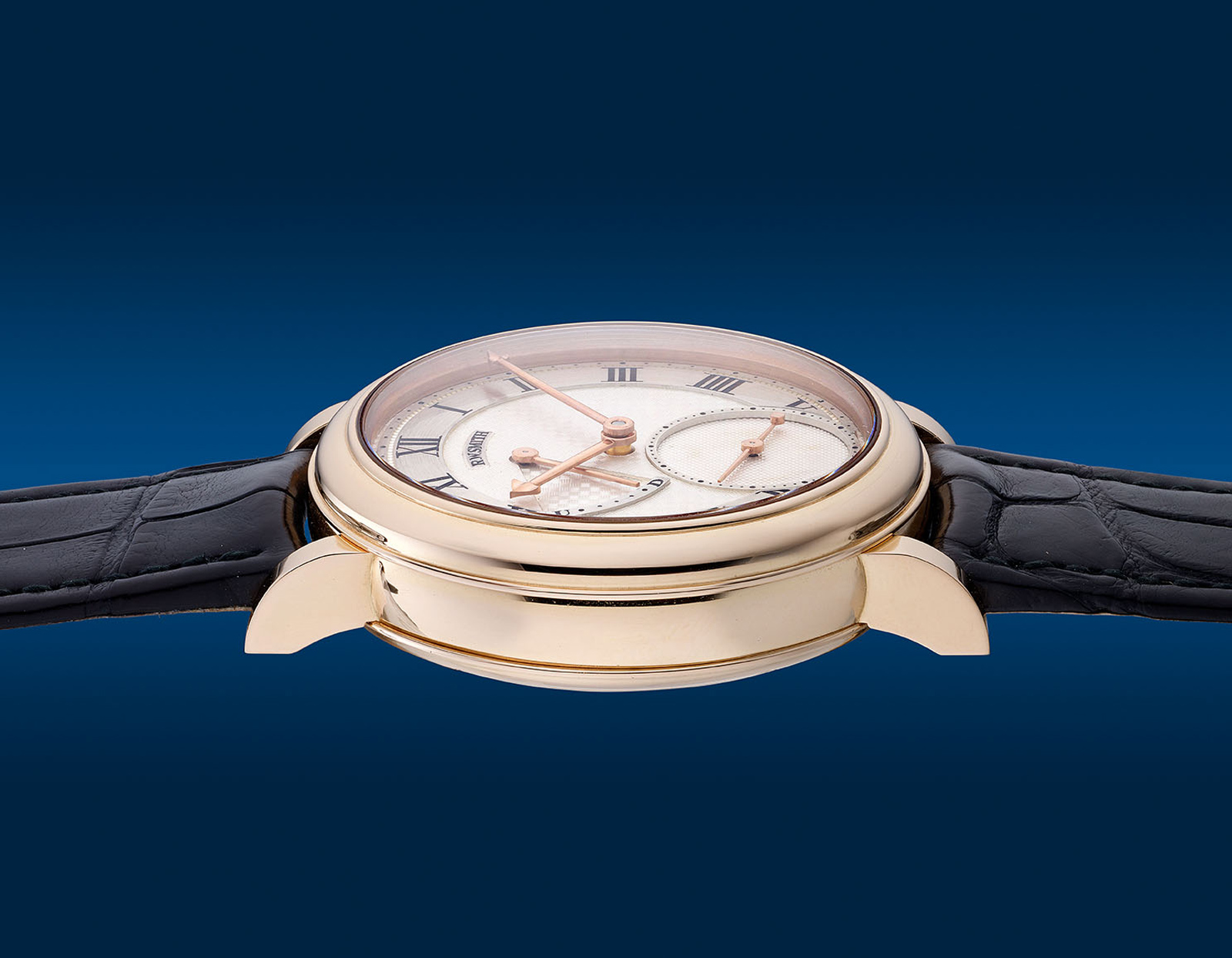
The rest of the watch is pretty much a standard Series 2 so it has the typical feel of a Roger Smith creation that contains several hand-made elements. The tips of the hands, for instance, are tiny polished arrows with a dramatic rounded profile – the result of a lengthy, painstaking process that includes manual bevelling and polishing.
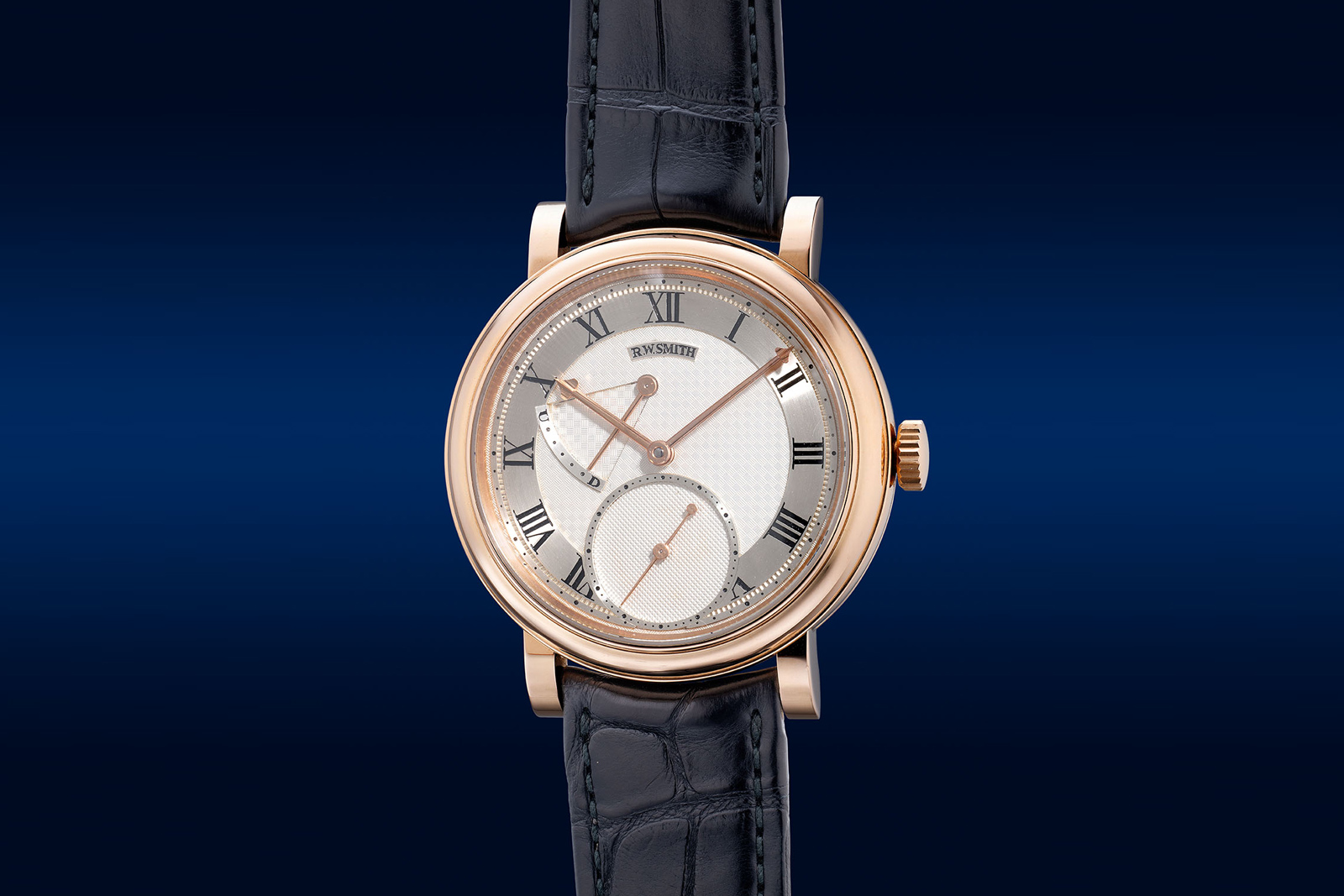
Accompanied by the original box and papers, the Series 2 has an estimate of HK$1.5- 2.5 million, or about US$192,000-321,000.
Full lot details here.
Founded in 1996 by Michel Parmigiani, a master watchmaker best known for having restored some of the most important antique timepieces in Switzerland, Parmigiani Fleurier is one of the original independent brands. Like many of its peers at the time, including F.P. Journe and Daniel Roth, Parmigiani was inspired by Breguet, explaining its Baroque house style.
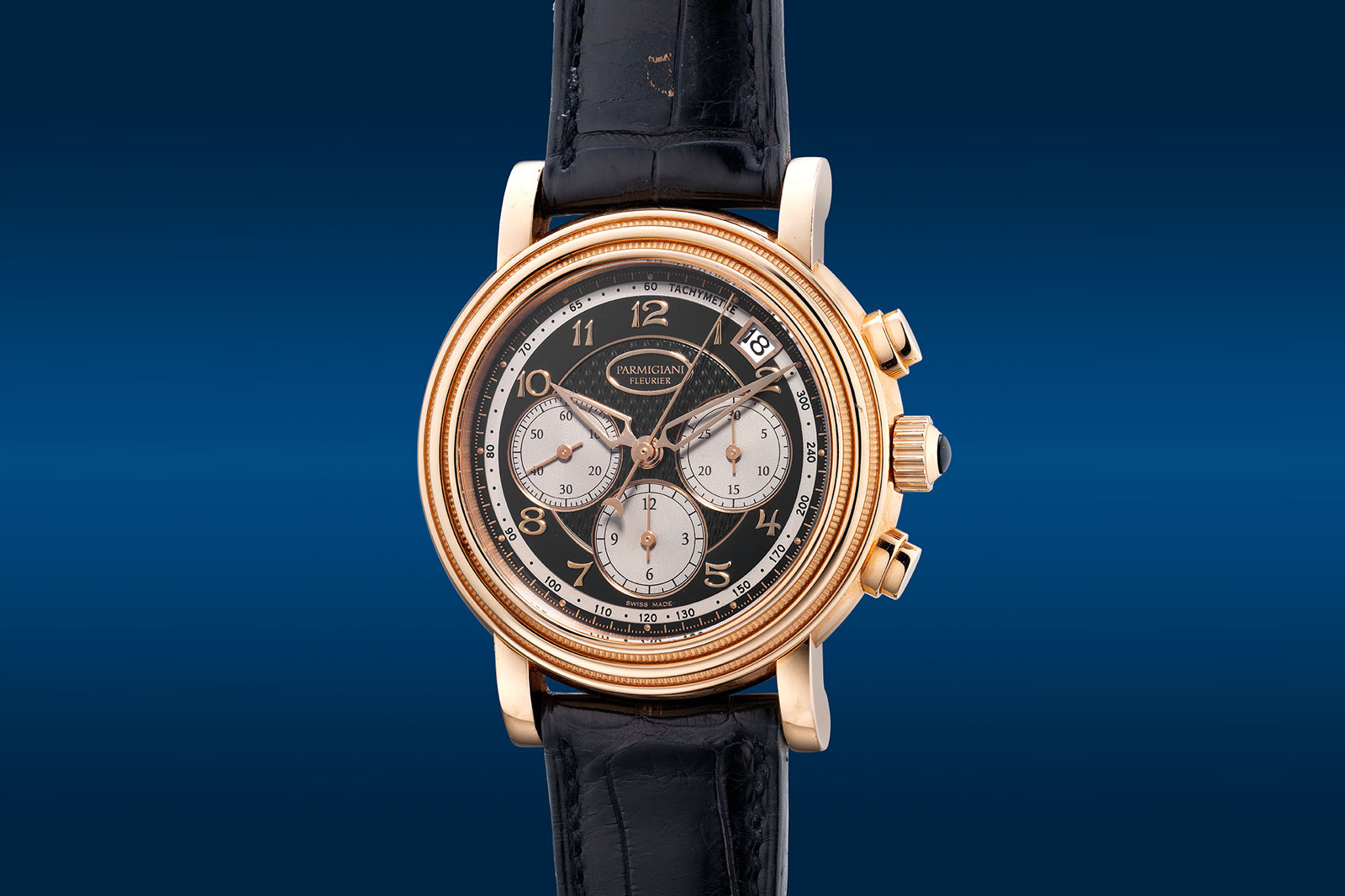
The Parmigiani style was exemplified by the Toric, the brand’s very first model and one designed by Mr Parmigiani himself. Characterised by a double-stepped knurled bezel, the Toric also featured soldered lugs, guilloche dials, and a cabochon on the crown.
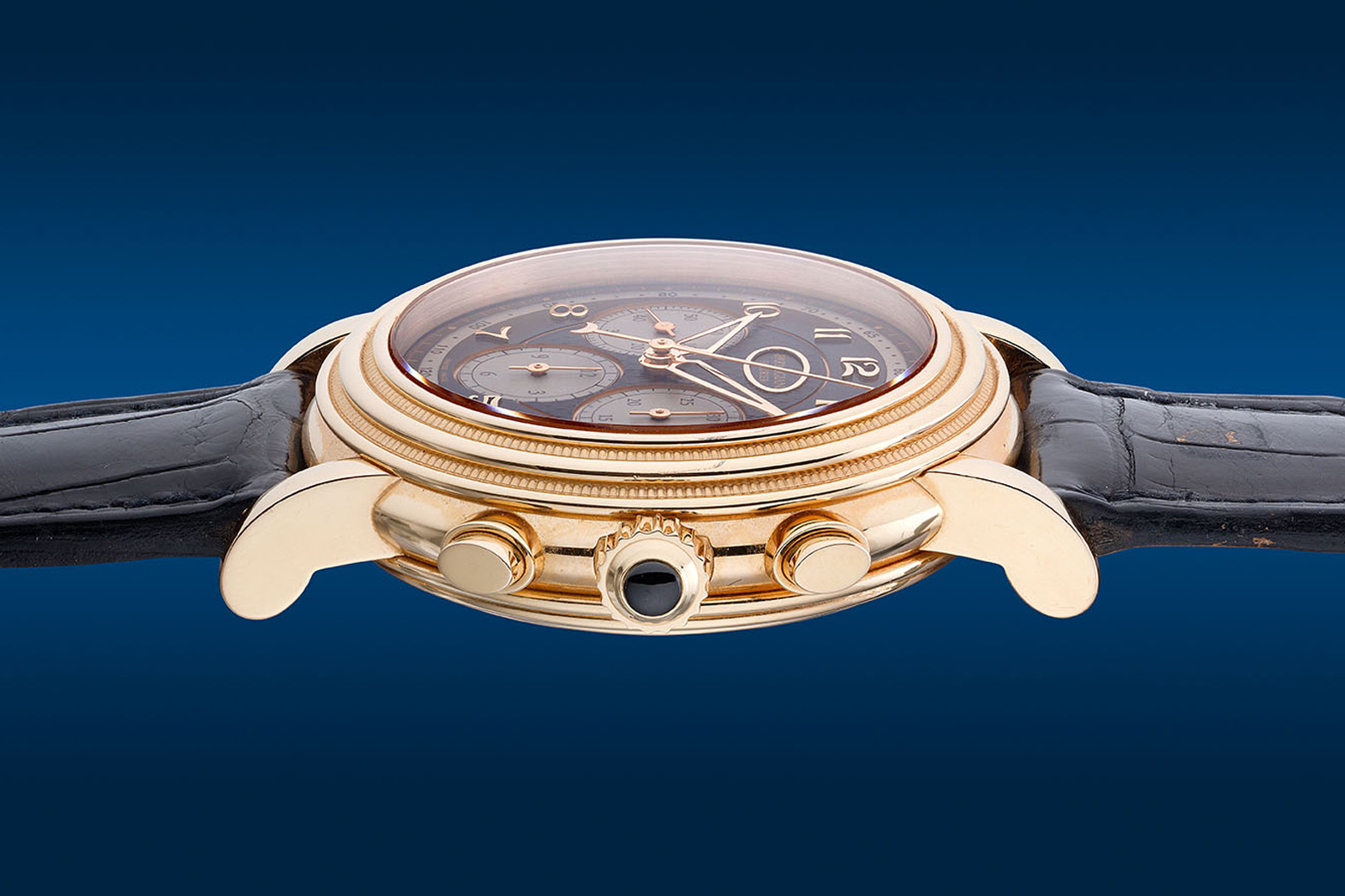
The present example is an early version of the Toric with two-stepped fluted bezel that was later simplified into a single level. The elaborate style of the case is echoed on the dial, which has an impressive degree of detail, including applied numerals, open-worked hands, and a guilloche centre. The result is ornate but harmonious, a contemporary reinterpretation of classic Breguet in a sense.
Inside is a modified Zenith El Primero 400, the iconic movement from 1969 that was the movement of choice for many brands seeking an automatic chronograph movement in the 1980s and 1990s, including Rolex and Urban Jurgensen. Notably, the El Primero found in Parmigiani watches is likely the best-finished version of the movement anywhere.
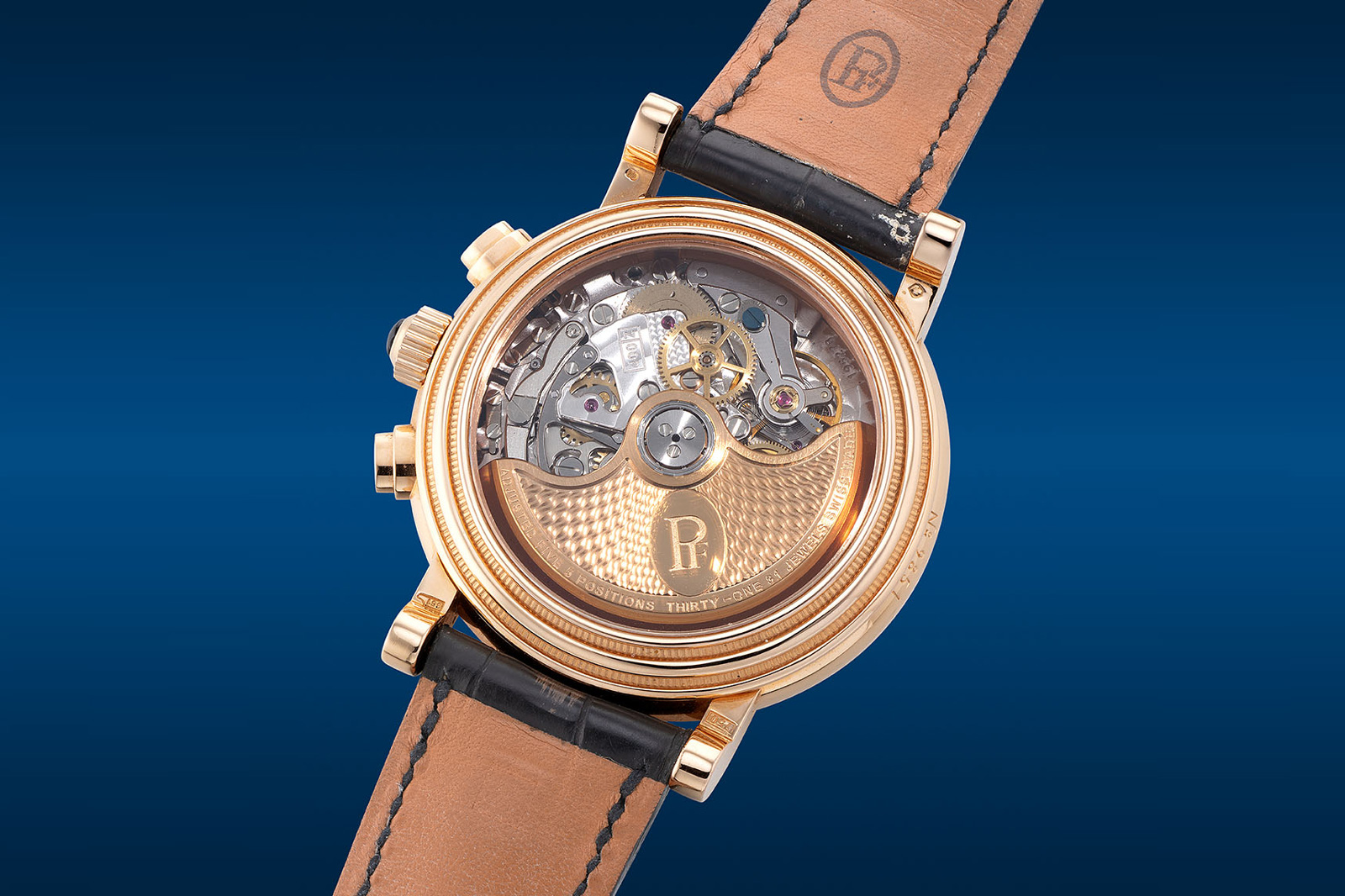
Completed with the original box and papers, the Toric Chronograph has a modest estimate of HK$70,000-140,000, or about US$9,000-17,900, making it one of the best value propositions in our selection.
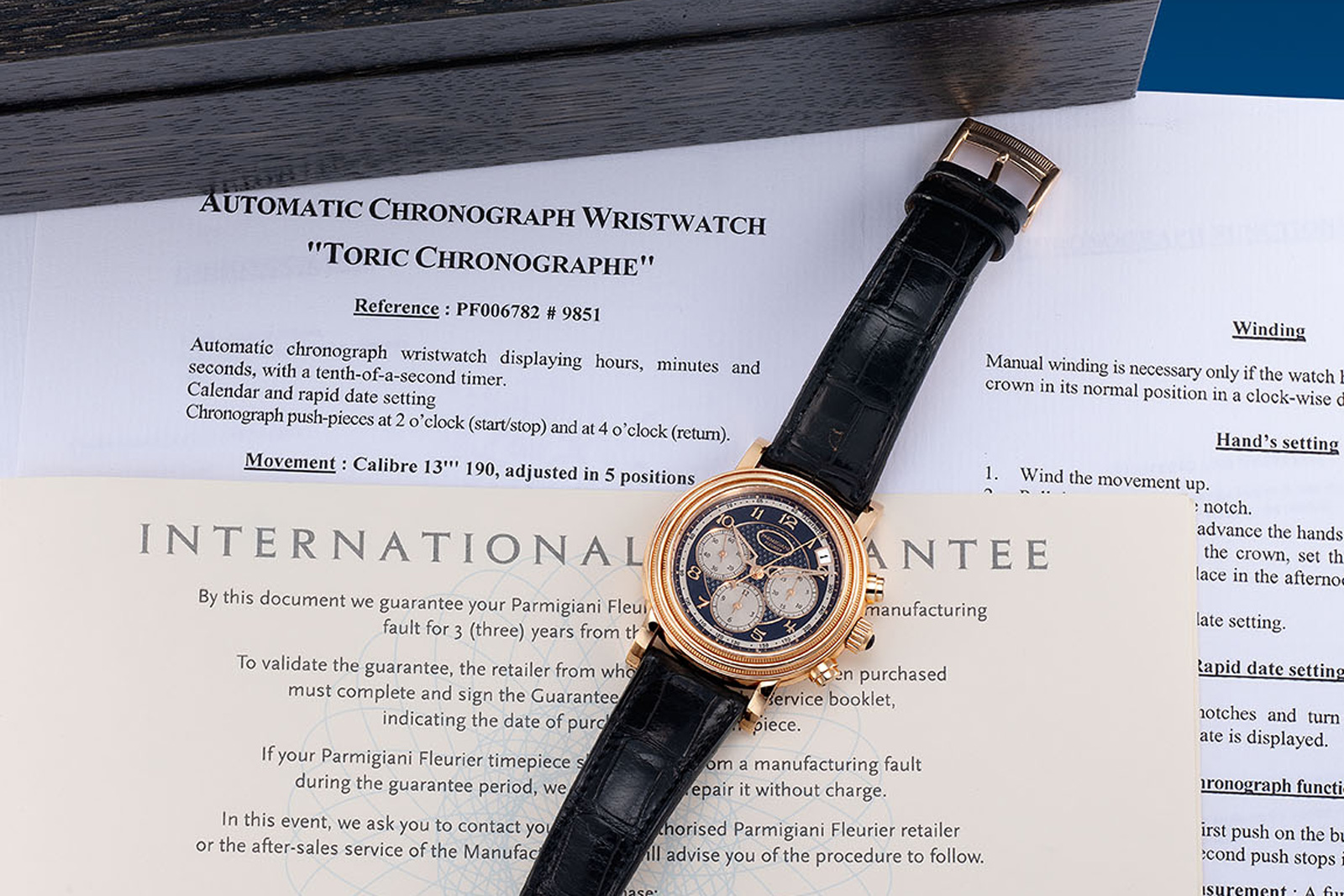
Full lot details here.
A brand respected for its movement construction and finishing, Romain Gauthier made its first appearance in 2007 with the cal. 2206 that debuted in the Prestige HM, which later evolved into the Prestige HMS, essentially the same watch but with an additional small seconds (HMS stands for hours, minutes, and seconds).
In other words, the present example captures the initial design codes of the brand that faded in its later models. Amongst the novel features found only on the early models is the big, flat “backwind” crown concealed on the case back that gives the case a perfectly symmetrical outline.
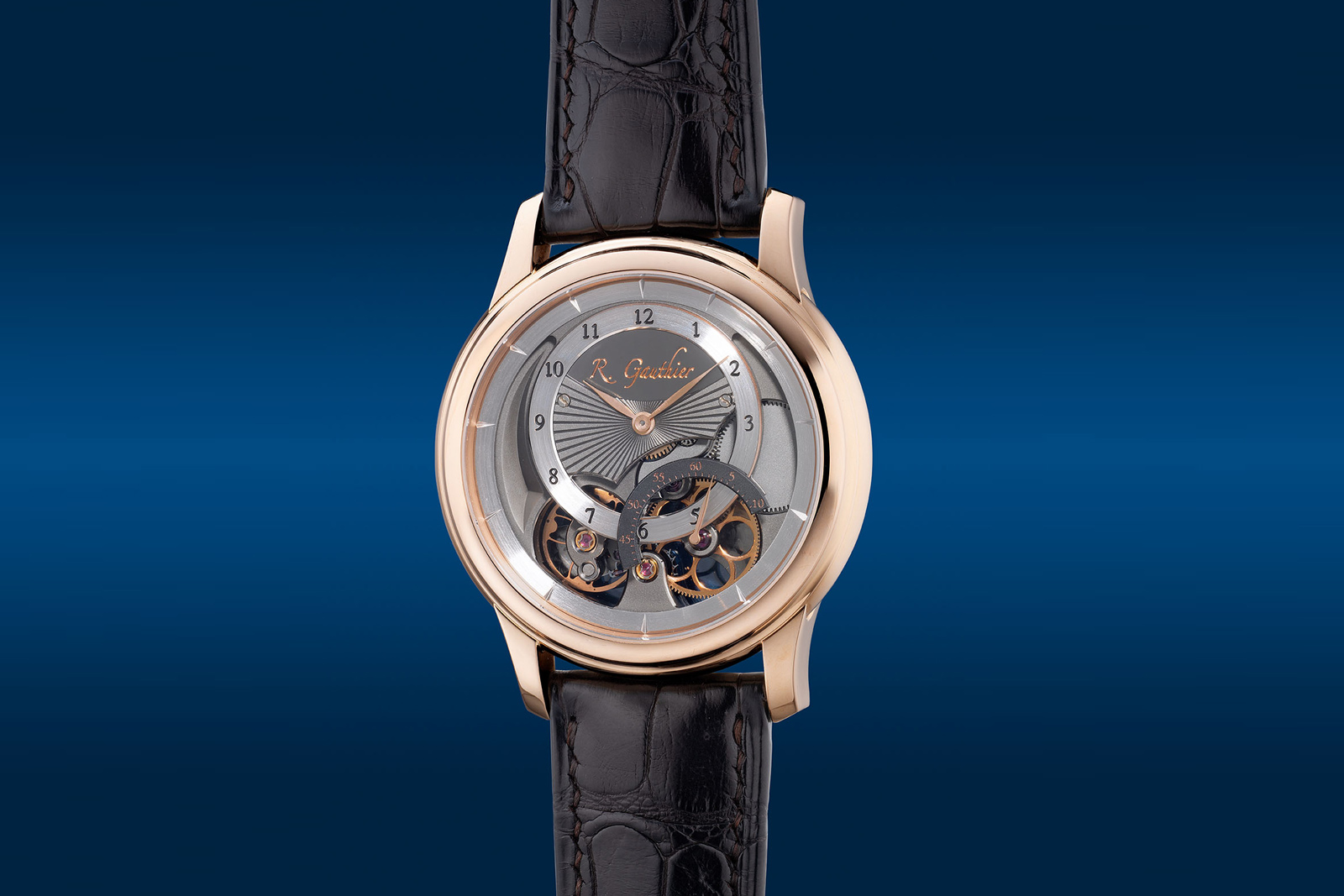
There have been several versions of the Prestige HMS, ranging from a traditional version with a gold case and partially open-worked dial to a modern execution in steel with a meteorite dial, but the Prestige HMS “Independence” is certainly more uncommon. It is a unique piece made for Hong Kong retailer Independence that features a light-grey dial that’s not found in other rose gold models, which typically had a silver or dark grey dial.
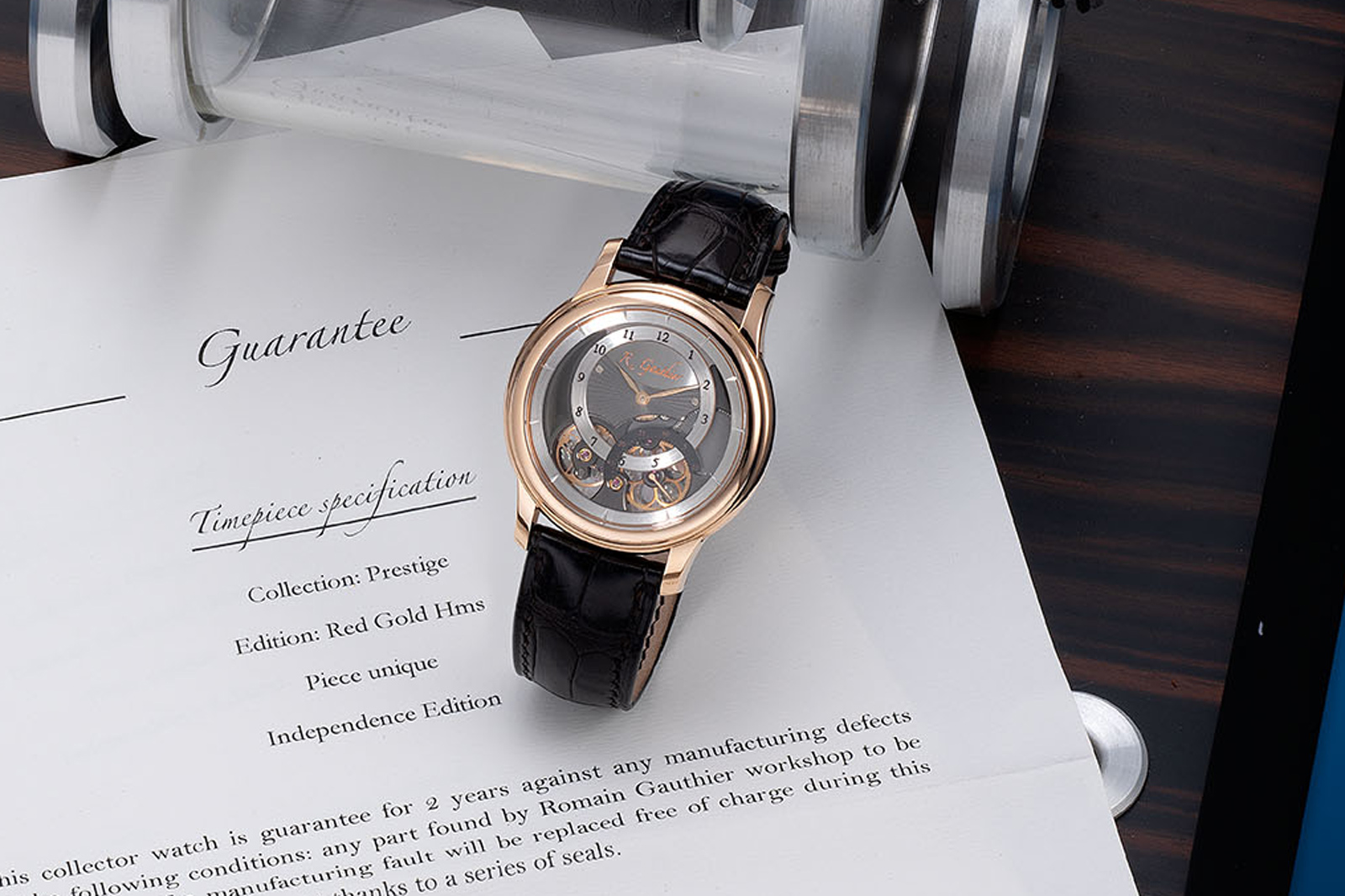
While the fact that it is a unique piece forms part of the appeal, it is arguably the tangible and intrinsic value of the HMS that are more important, especially relative to the affordable estimate.
Amongst its best features is the movement. The bridges have fluid forms that are modern but with a hint of tradition. They are the perfect base for haute horlogerie finishing that includes wide, polished bevels incorporating sharp, inward angles at intersections. And inventions proprietary to Romain Gauthier can be seen on both sides of the watch, such as the petal-shaped wheels and a free-sprung balance with skeletonised, gently-curved arms.
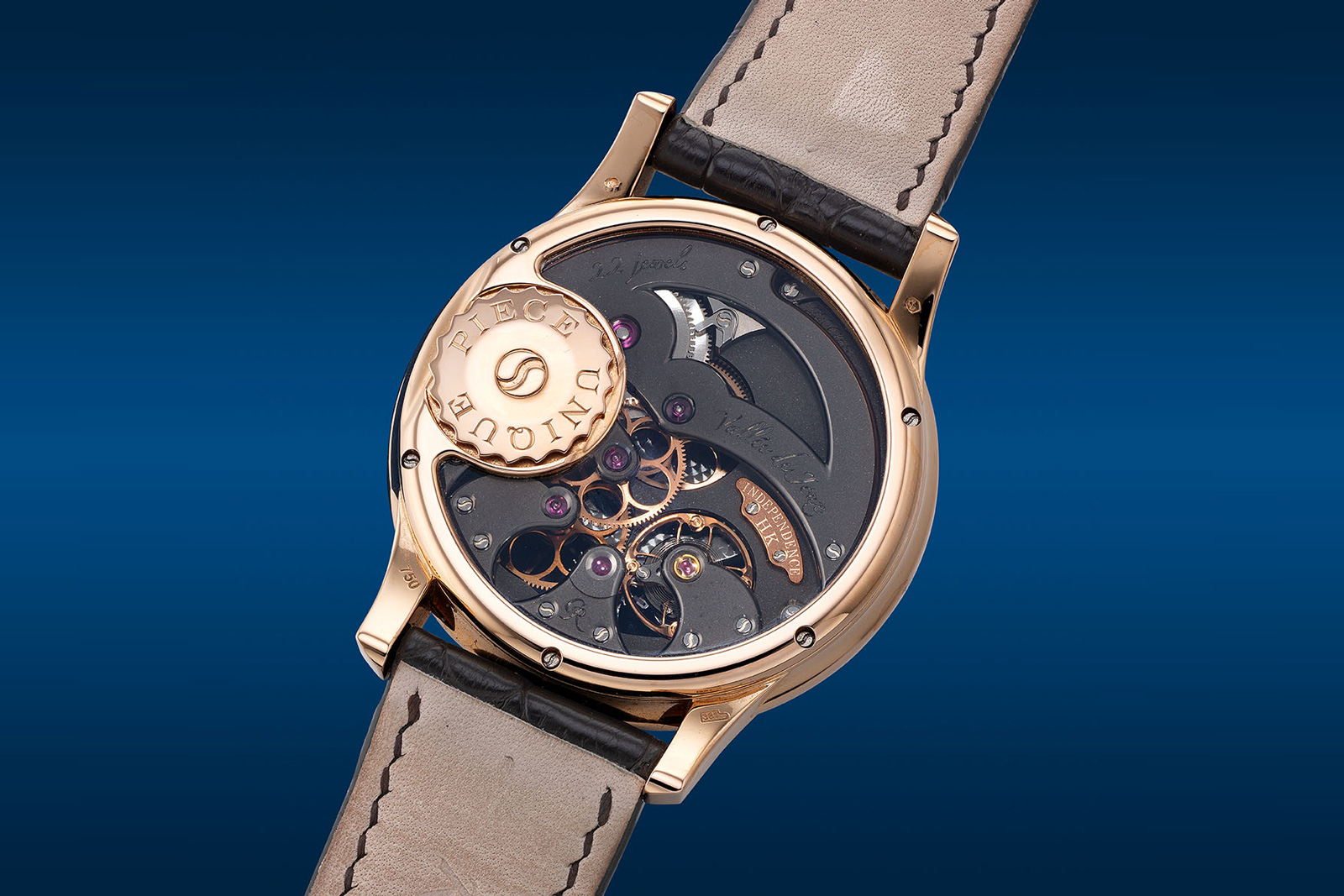
The Prestige HMS “Independence” is accompanied with the original box and papers, and has an estimate of HK$120,000-200,000, or US$15,400-25,600, a modest sum that offers strong value considering the movement quality.
Full lot details here.
Another time-only watch made for the same Hong Kong retailer is this Ludovic Ballouard Upside Down in platinum. For those who appreciate avant-garde time displays but do not fancy the flashy forms of an Urwerk or MB&F, this is a more restrained alternative.
The model stands out with its unusual time display that relies on conventional minute and seconds hands, but with the hour indicated by rotating discs. Only the current hour is the right way up, while all other hours are upside down.
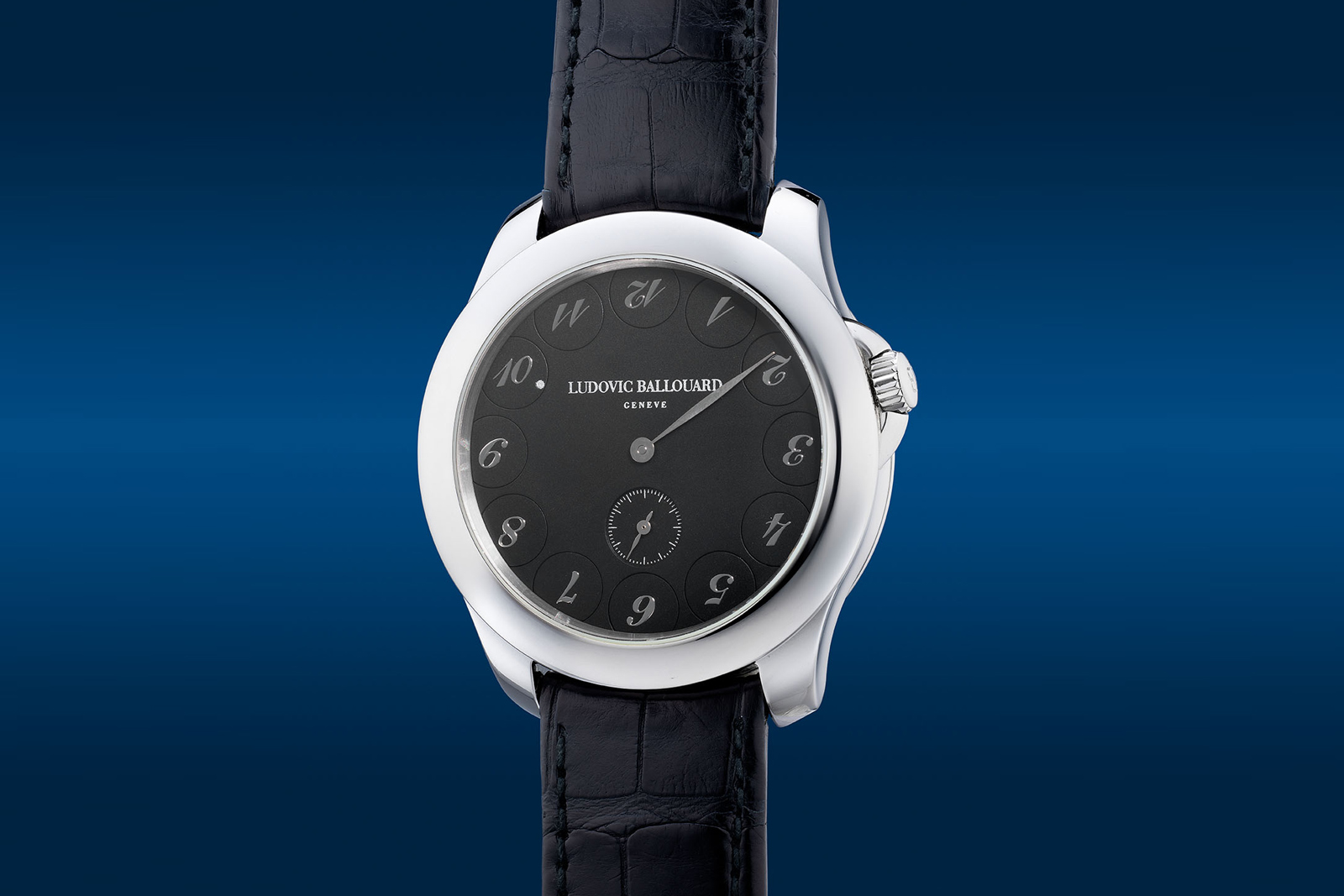
As the minute hand passes 12 o’clock, the hour discs for the past and current hour both jump, making this one of the more complicated jump hours on the market. The current hour is also made more obvious with a dot that points towards the centre of the dial and is smartly hidden under the dial flange when the disc is upside down.
Controlled via Maltese crosses and a snail cam that are all visible through the open back, the discs are part of a time-display module produced by Mr Ballouard himself. The base movement on the other hand is a manual-wind Peseux 7001. Here the movement has been finished with a dark grey coating to match the black dial.
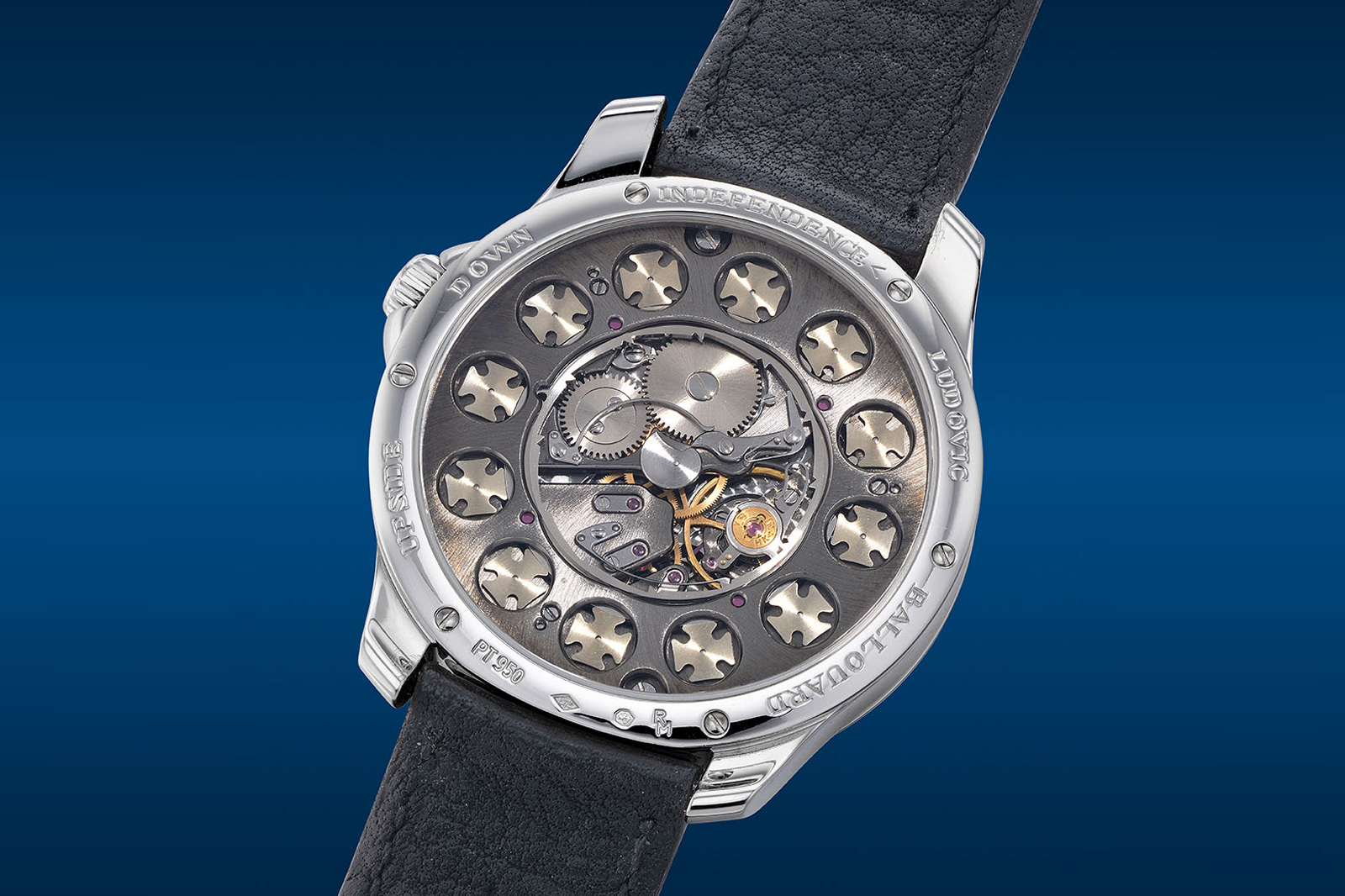
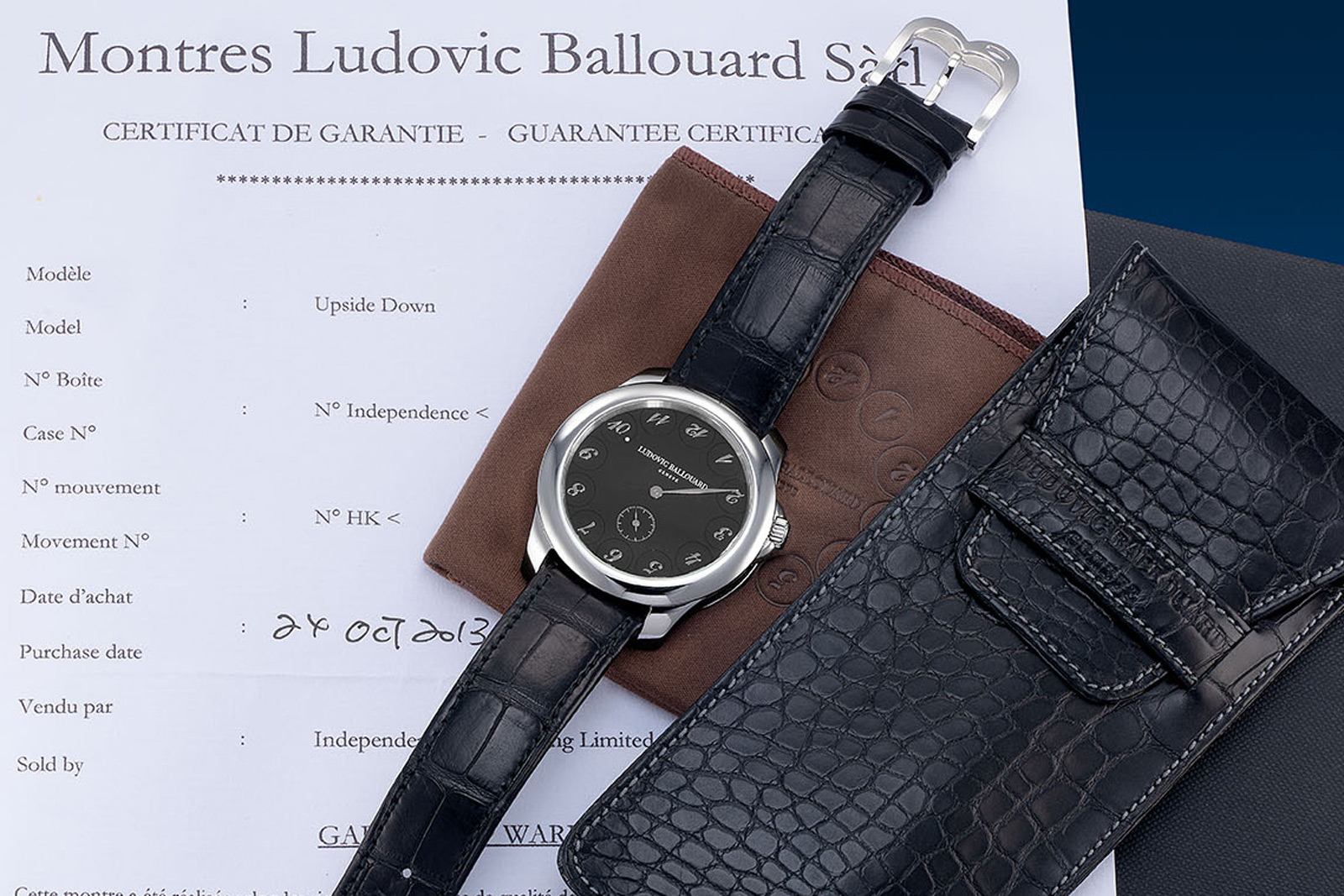
A similar example sold at last year Phillips autumn sale in Geneva sale for about US$64,000, but now the Upside Down “Independence” has an estimate of HK$160,000-260,000, or about US$20,500-33,300. It includes all the original packaging, including a crocodile-hide pouch.
Full lot details here.
A watch that’s easy to understand in both concept and quality, the Philippe Dufour Simplicity has perhaps unsurprisingly enjoyed a steep increase in value of late. A recent, regular-production example achieved a record high at Phillips’ recent sale in Geneva, crossing the million-dollar mark. This example, however, sticks a modest estimate that’s a fraction of the recent result.
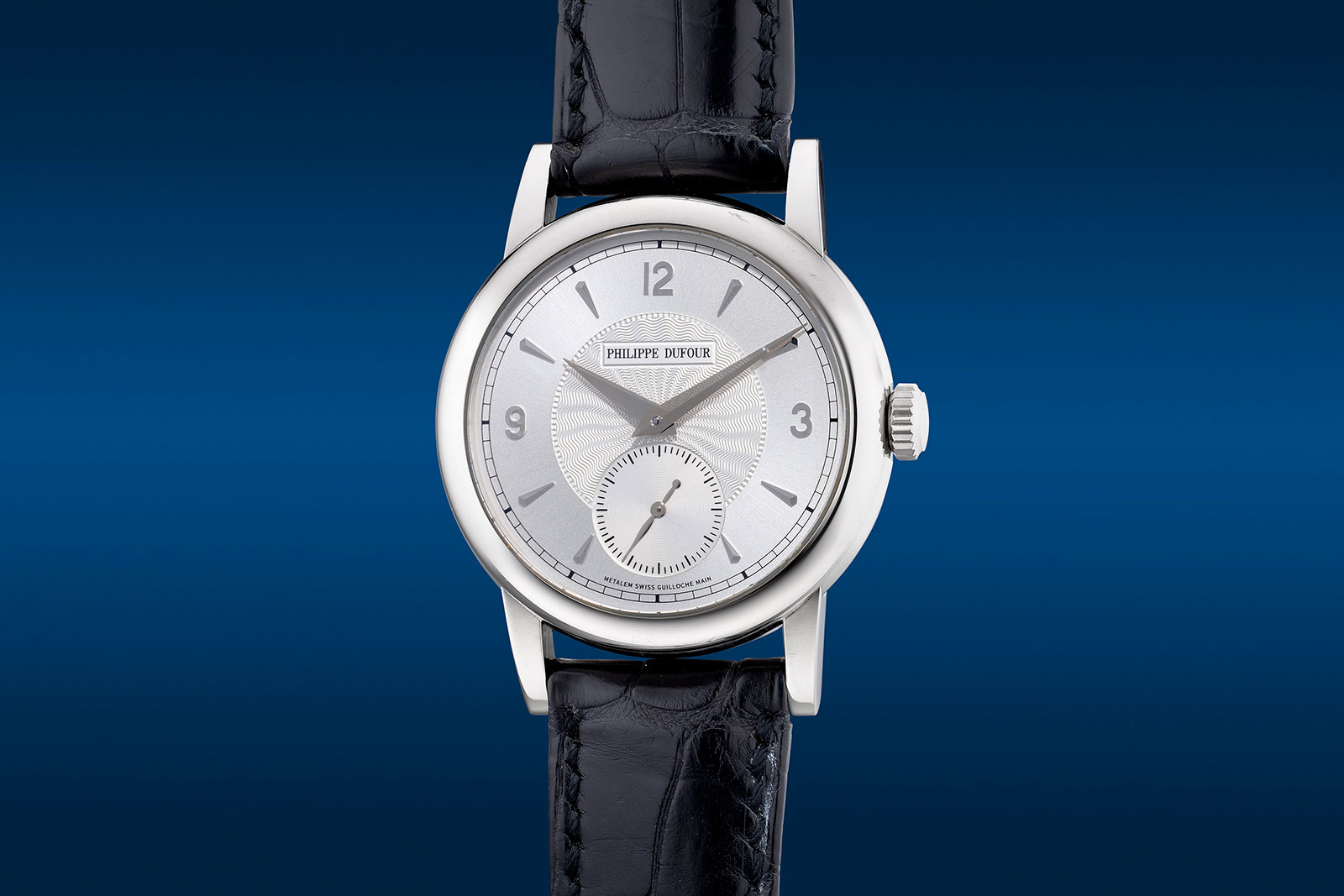
Though Mr Dufour has made several special executions of the Simplicity beyond the original 200-piece run (the example recently sold in Geneva was one of these), the iconic version of the Simplicity is the most classical, like the present example that has a white-metal case and a silver guilloche dial, making it almost identical to the prototype Mr Dufour himself wears.
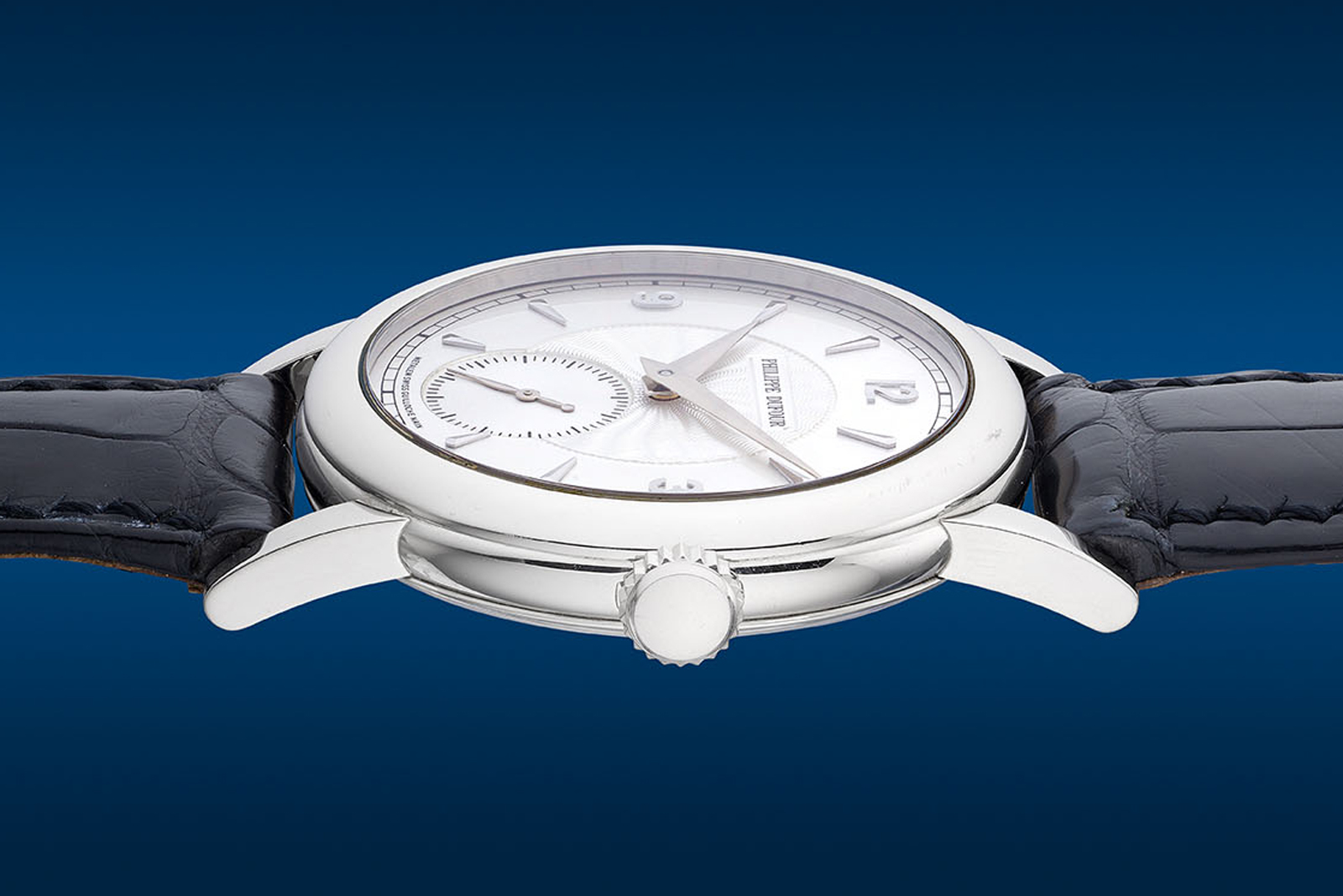
The present example has the larger 37 mm case as opposed to the original 34 mm, but one sized just right for modern preferences. And more importantly, it’s not just a bigger case but instead accompanied by a larger movement that gives it a perfectly proportional appearance on the back.
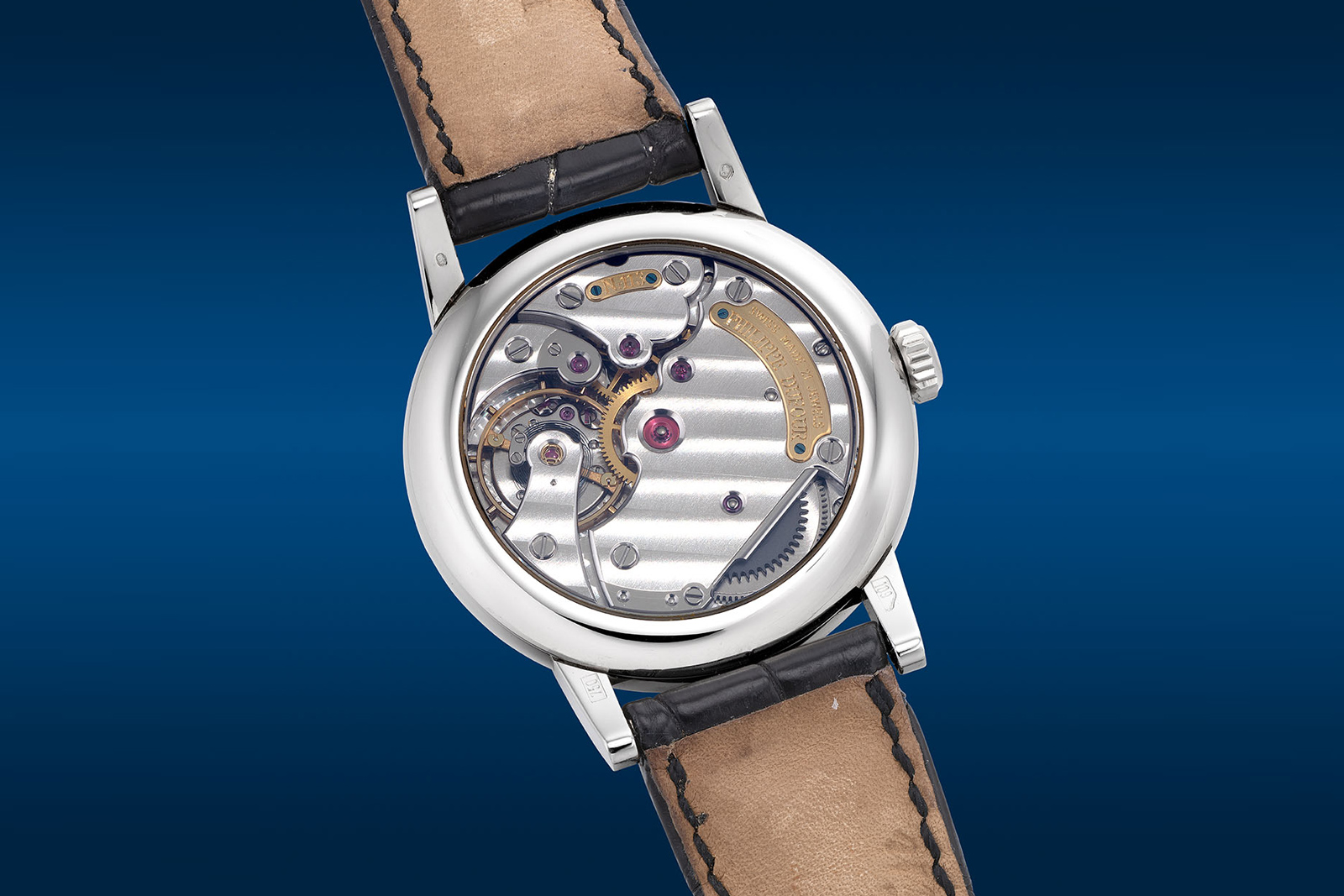
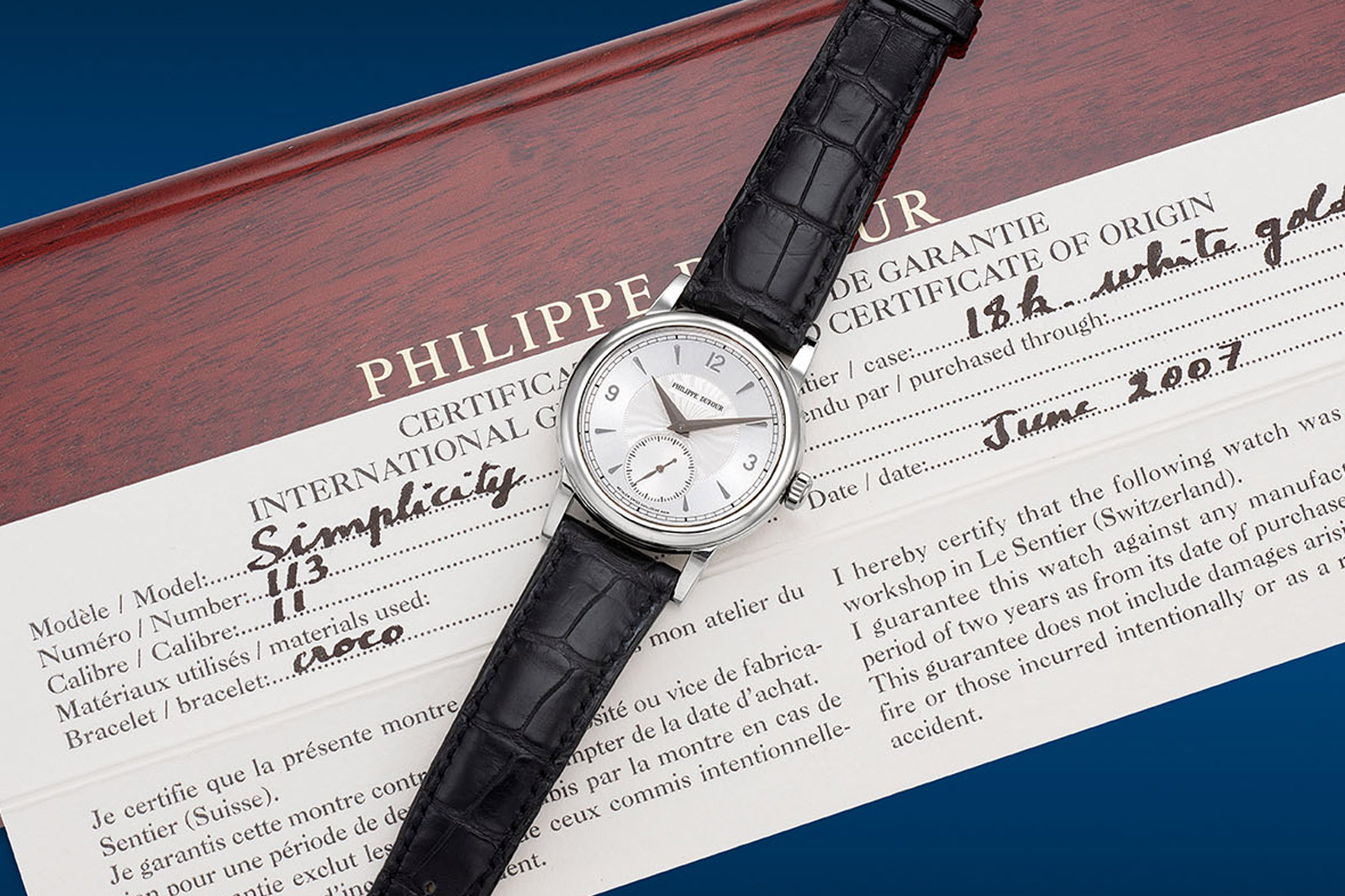
Numbered “113” on the movement, the Simplicity was delivered in 2007 and retains its original certificate. It has an estimate of HK$1.6-3.2 million, or about US$205,000-410,000.
Full lot details here.
Preview and auction details
All lots will be on show during the preview exhibition in the run-up to the auction. Both take place at the JW Marriott Hotel in Pacific Place.
JW Marriott Hotel
88 Queensway
Admiralty
Hong Kong
Preview
Open daily November 24-29, 10:00 am-7:00 pm
Auction
November 28, 2:00 pm (lots 801-938)
November 29, 2:00 pm (lots 939-1070)
All times are local to Hong Kong, GMT+8.
For the full catalogue, as well as viewing appointments and online bidding, visit Phillips.com.
This was brought to you in collaboration with Phillips.
Back to top.